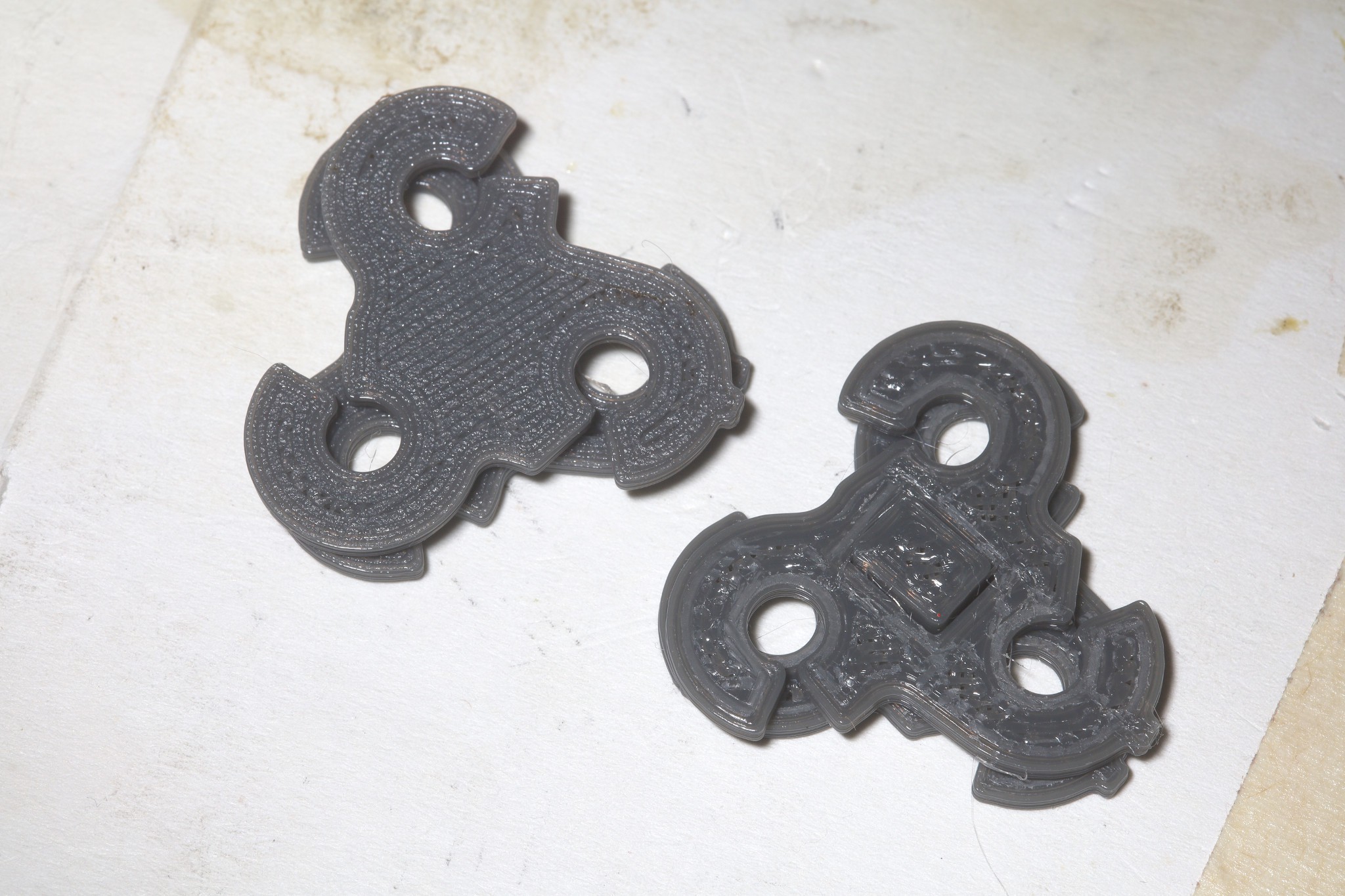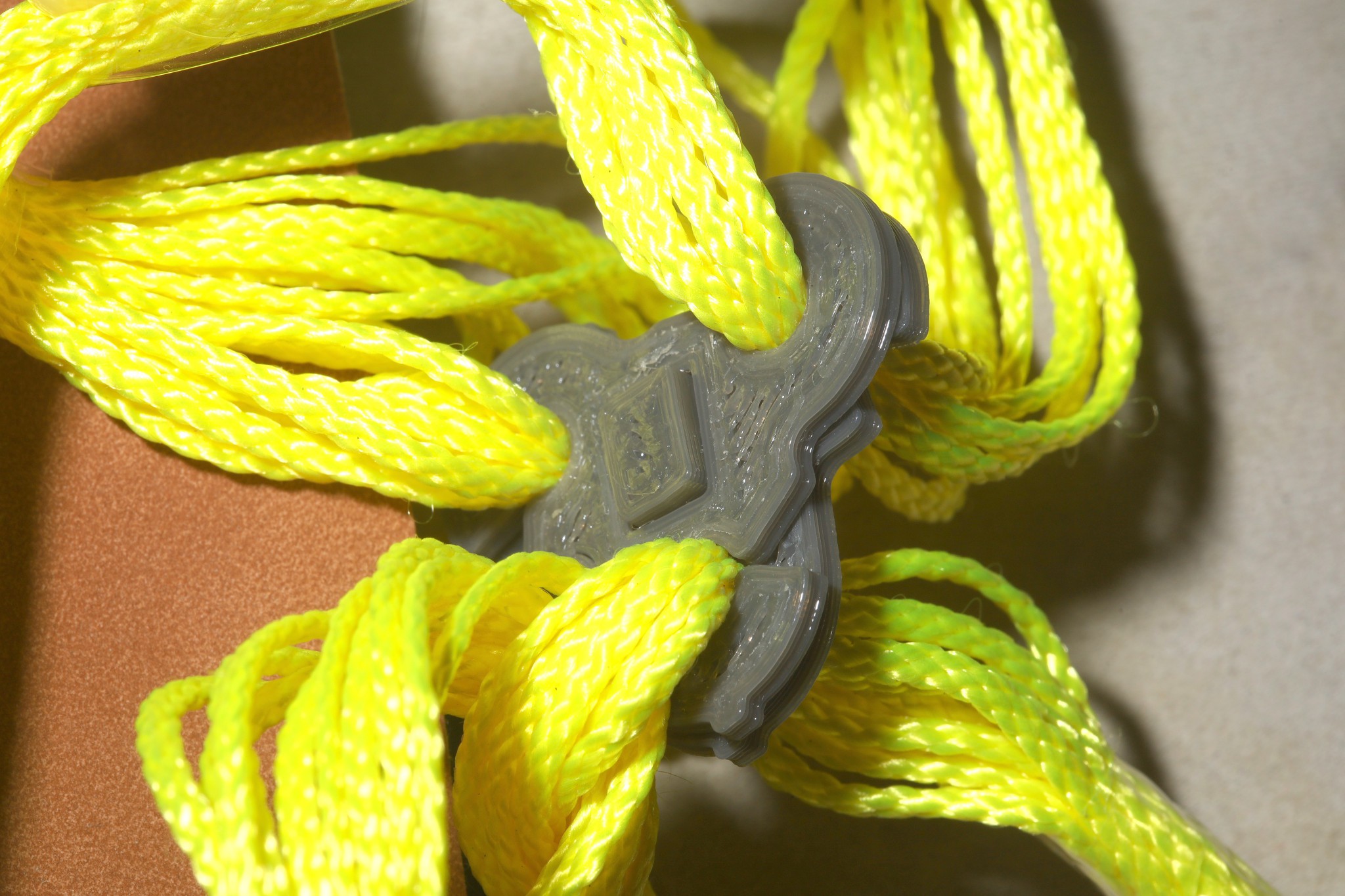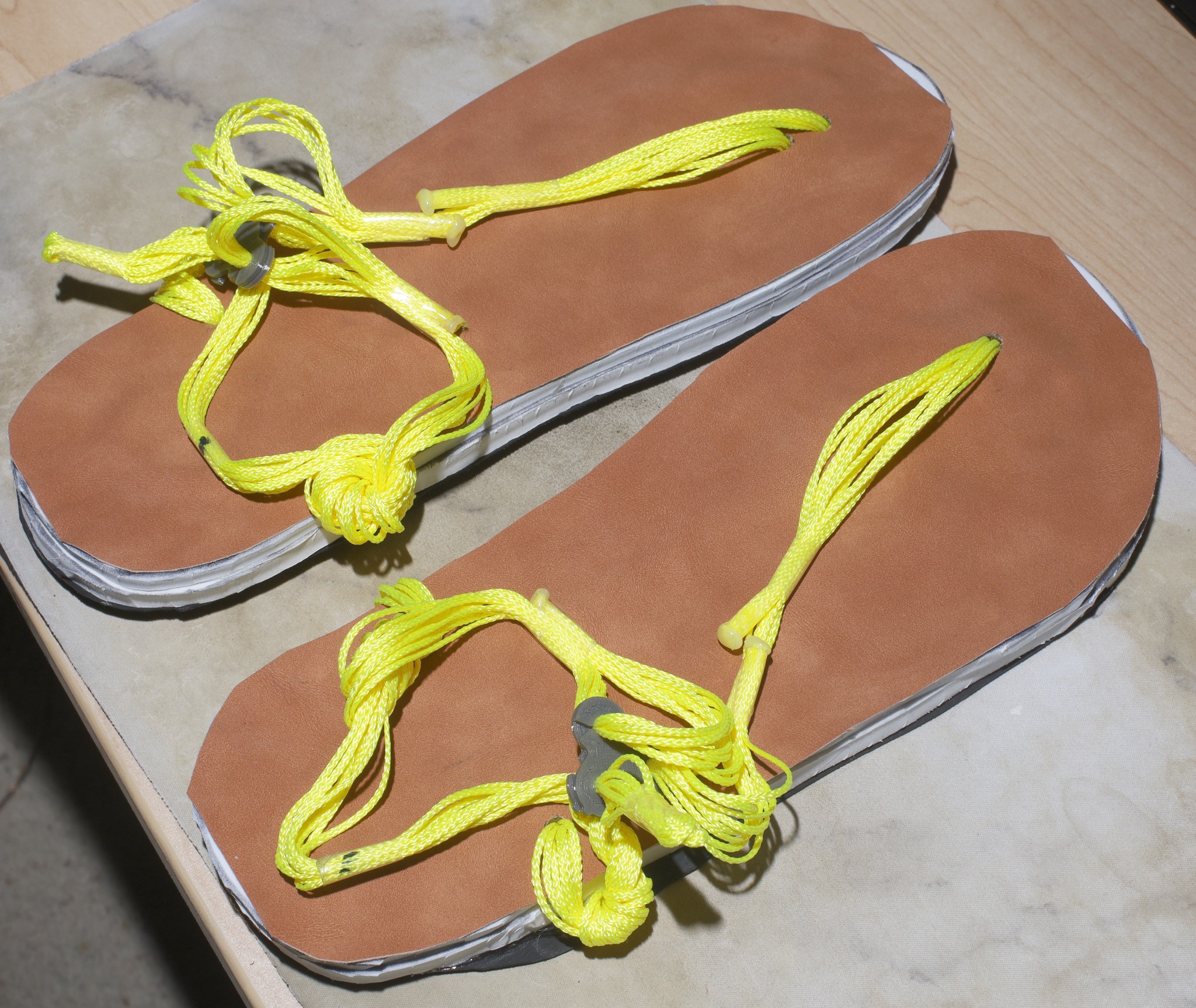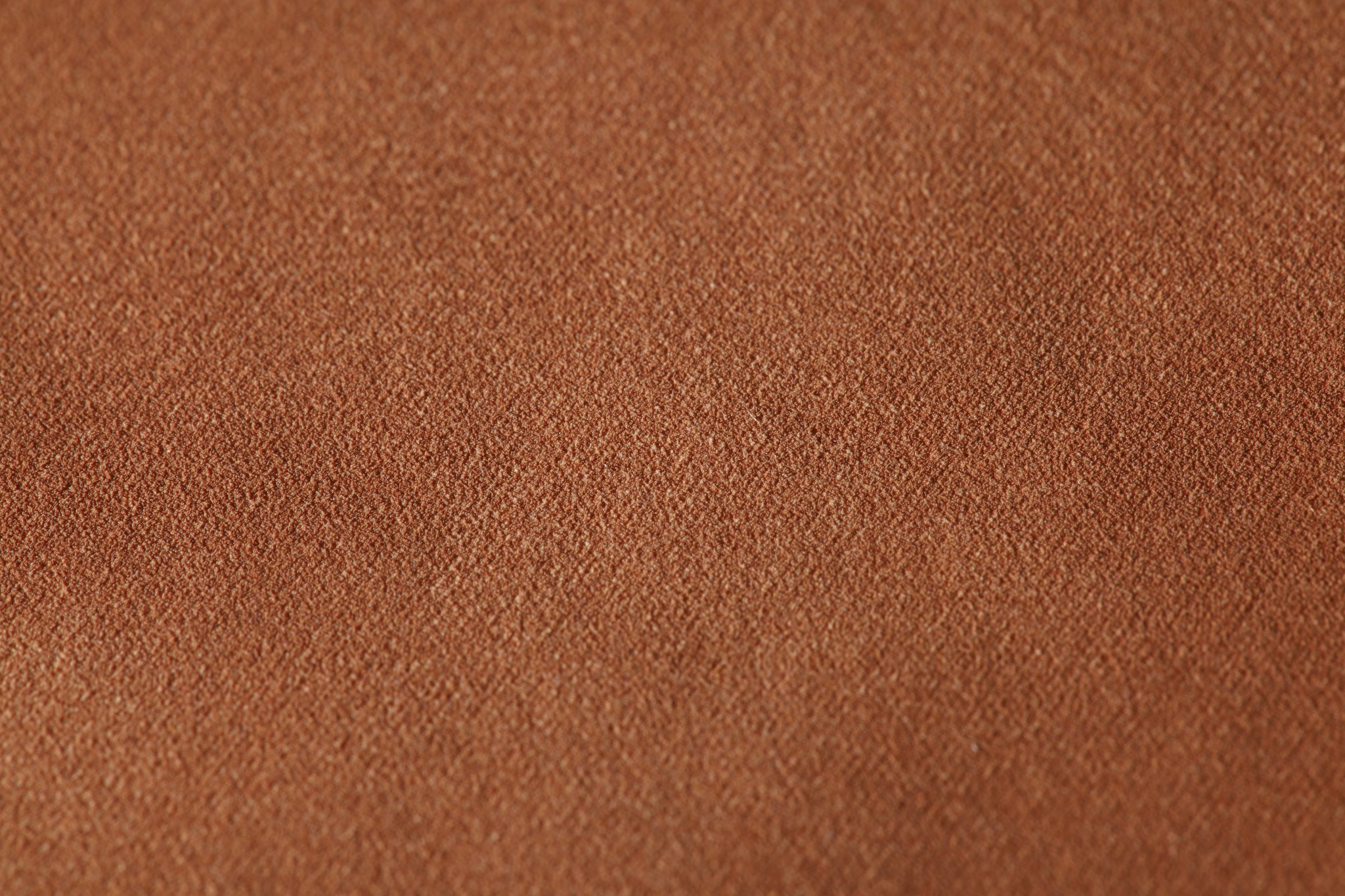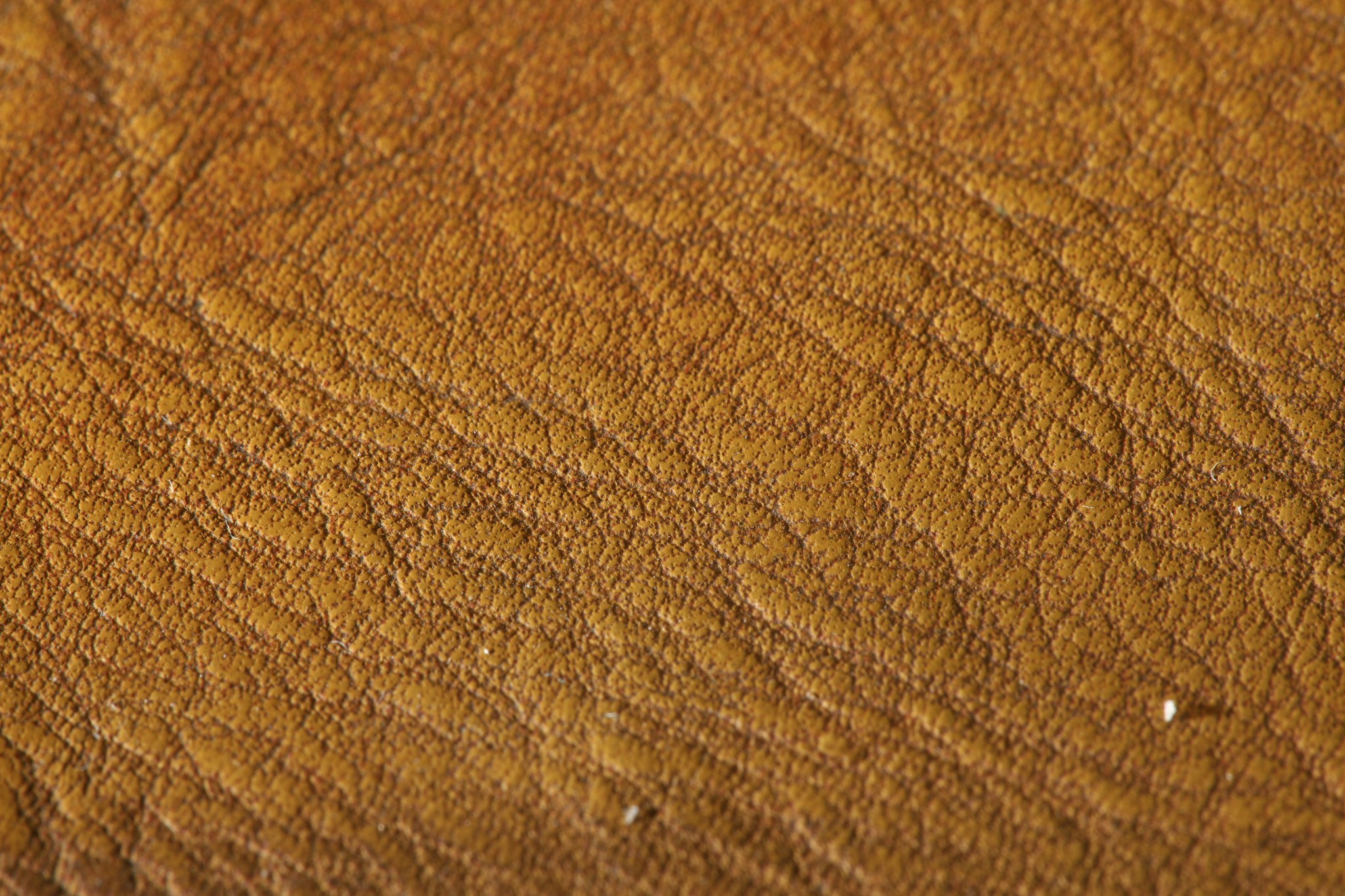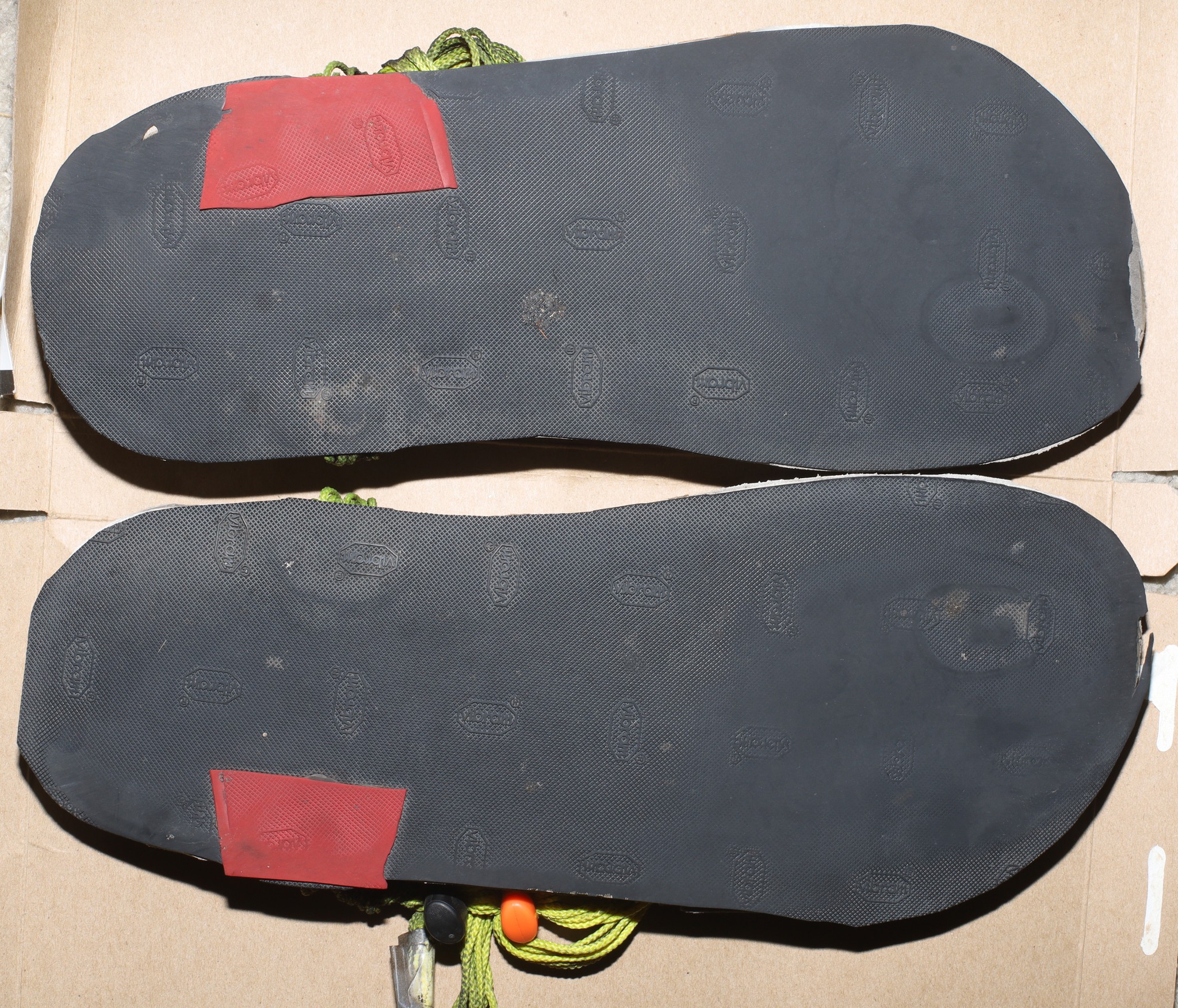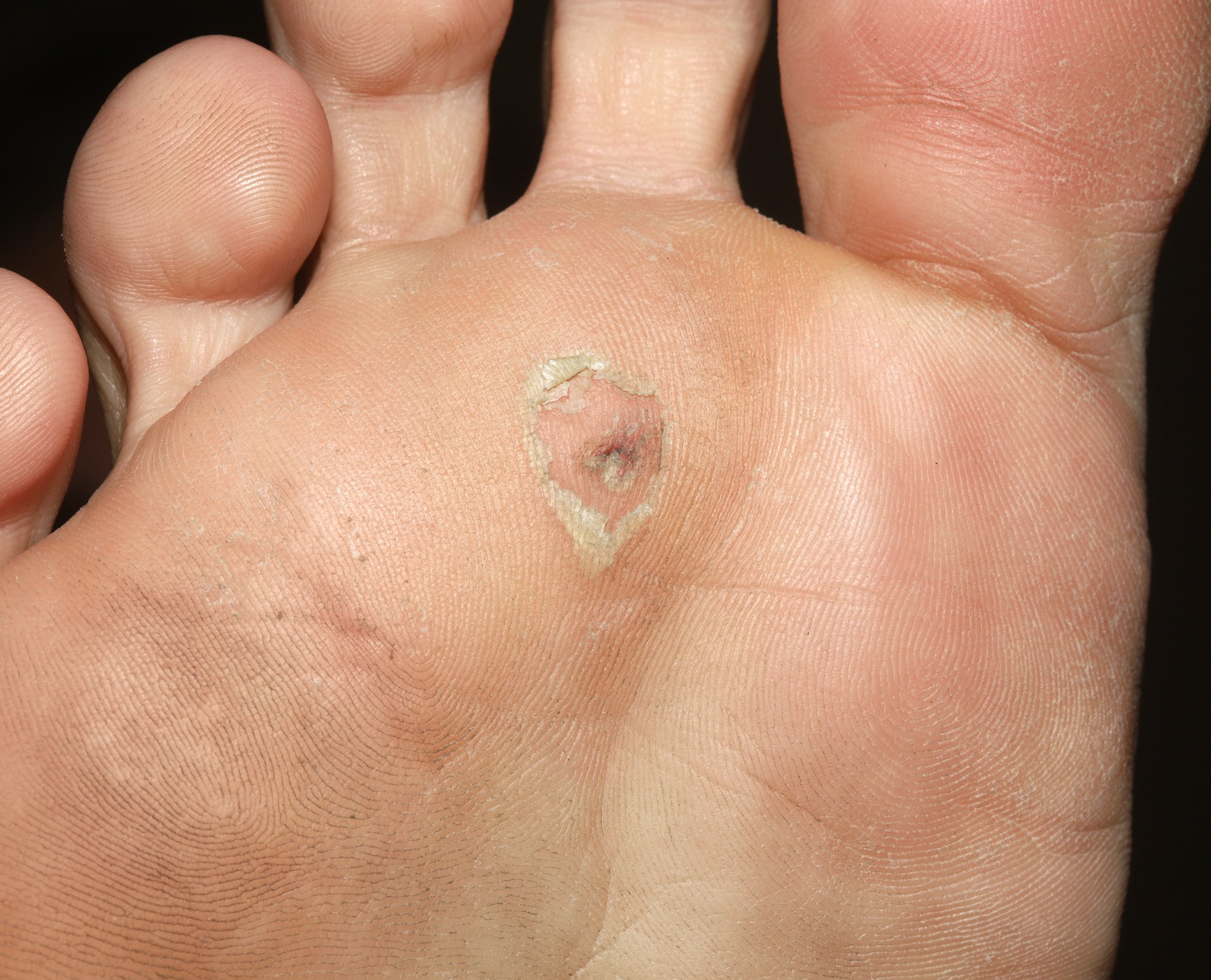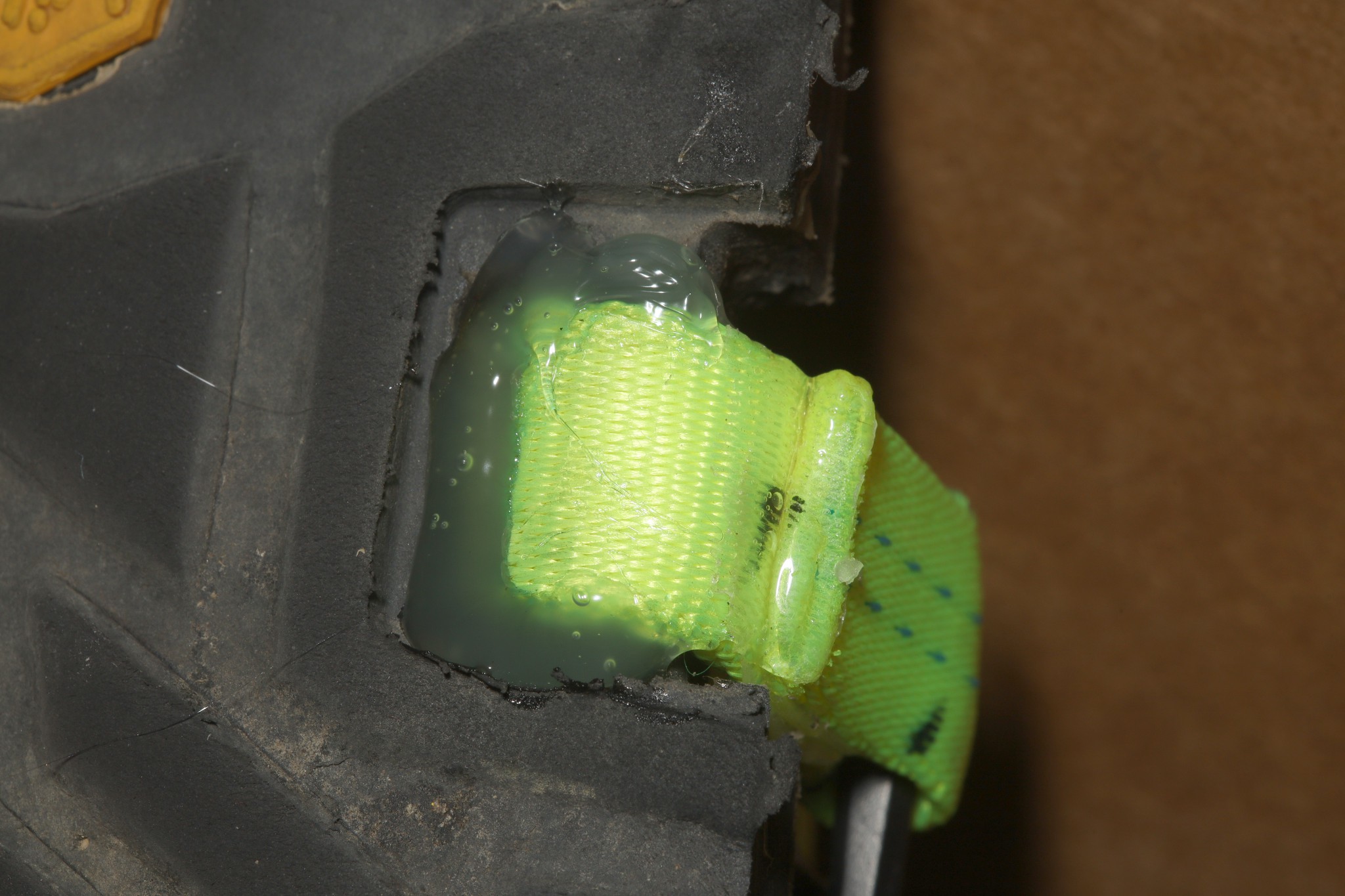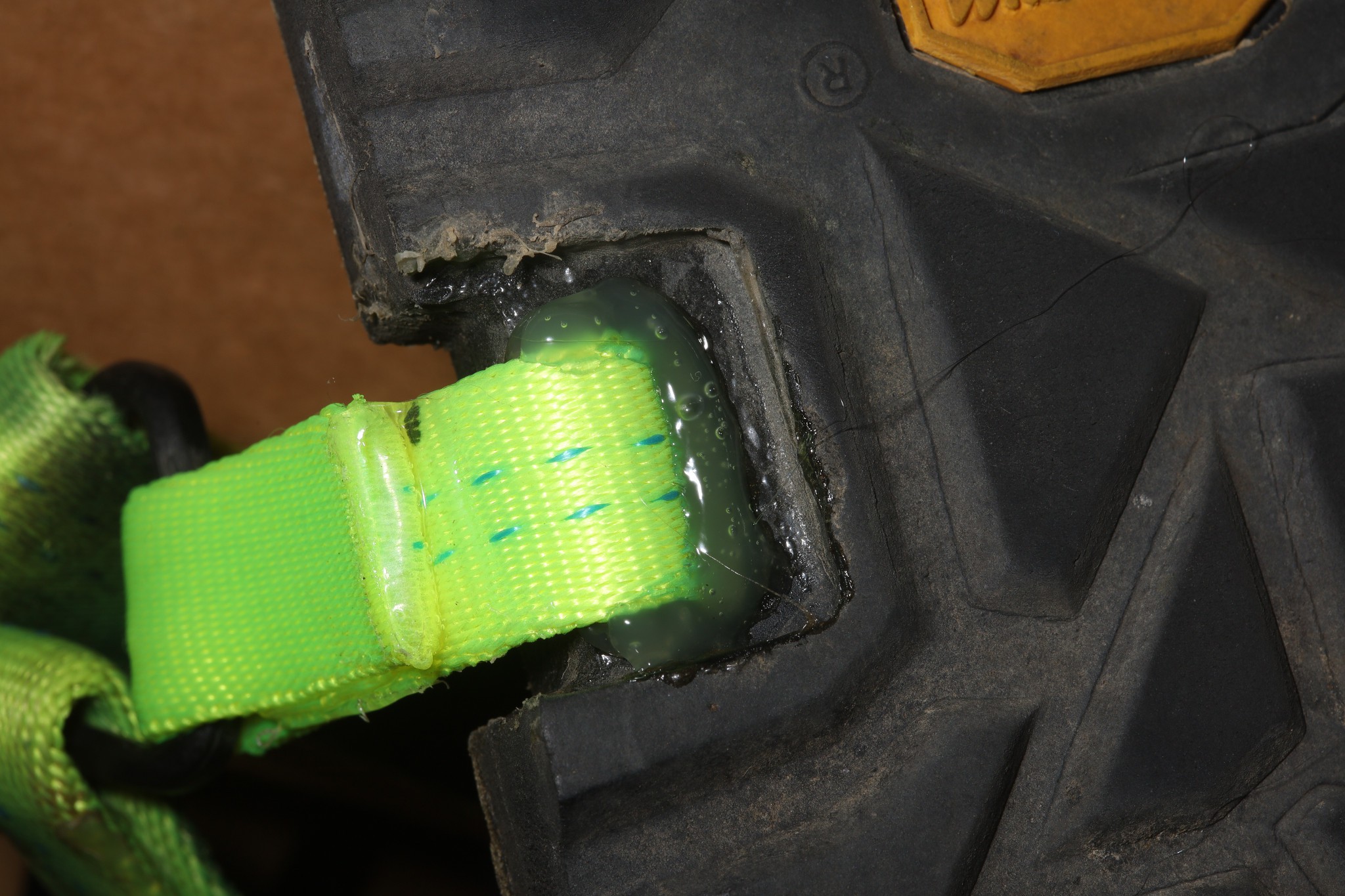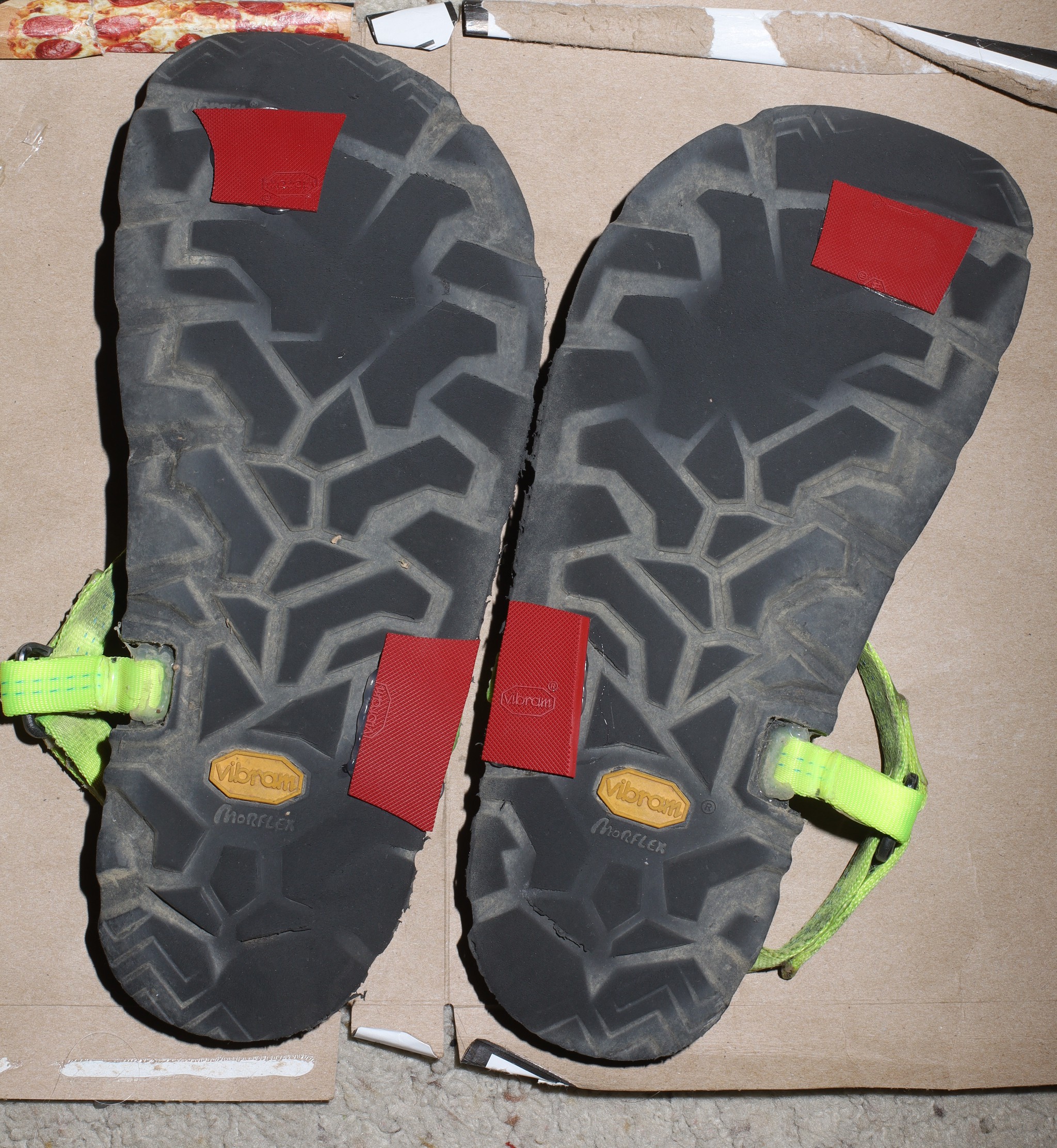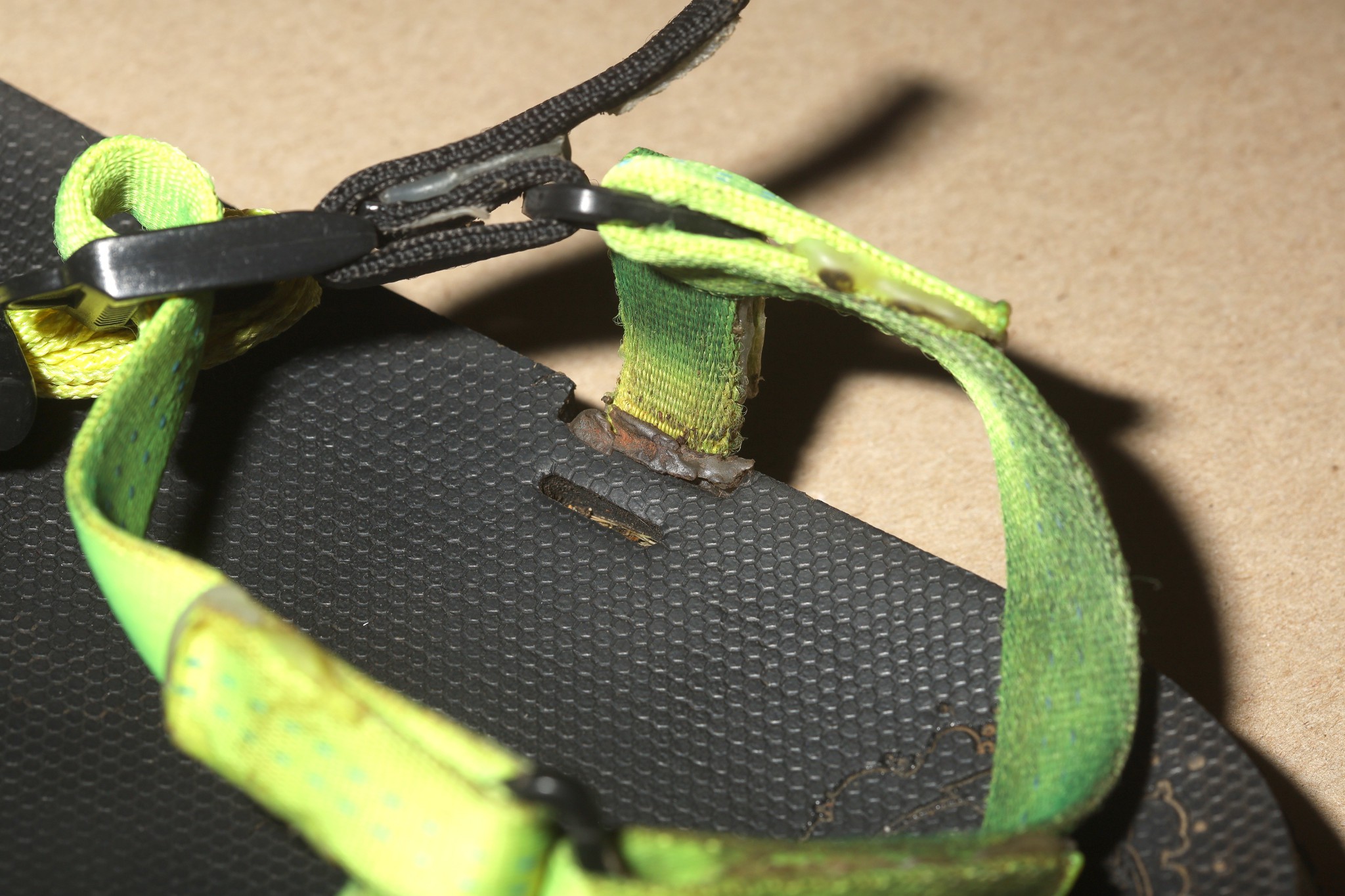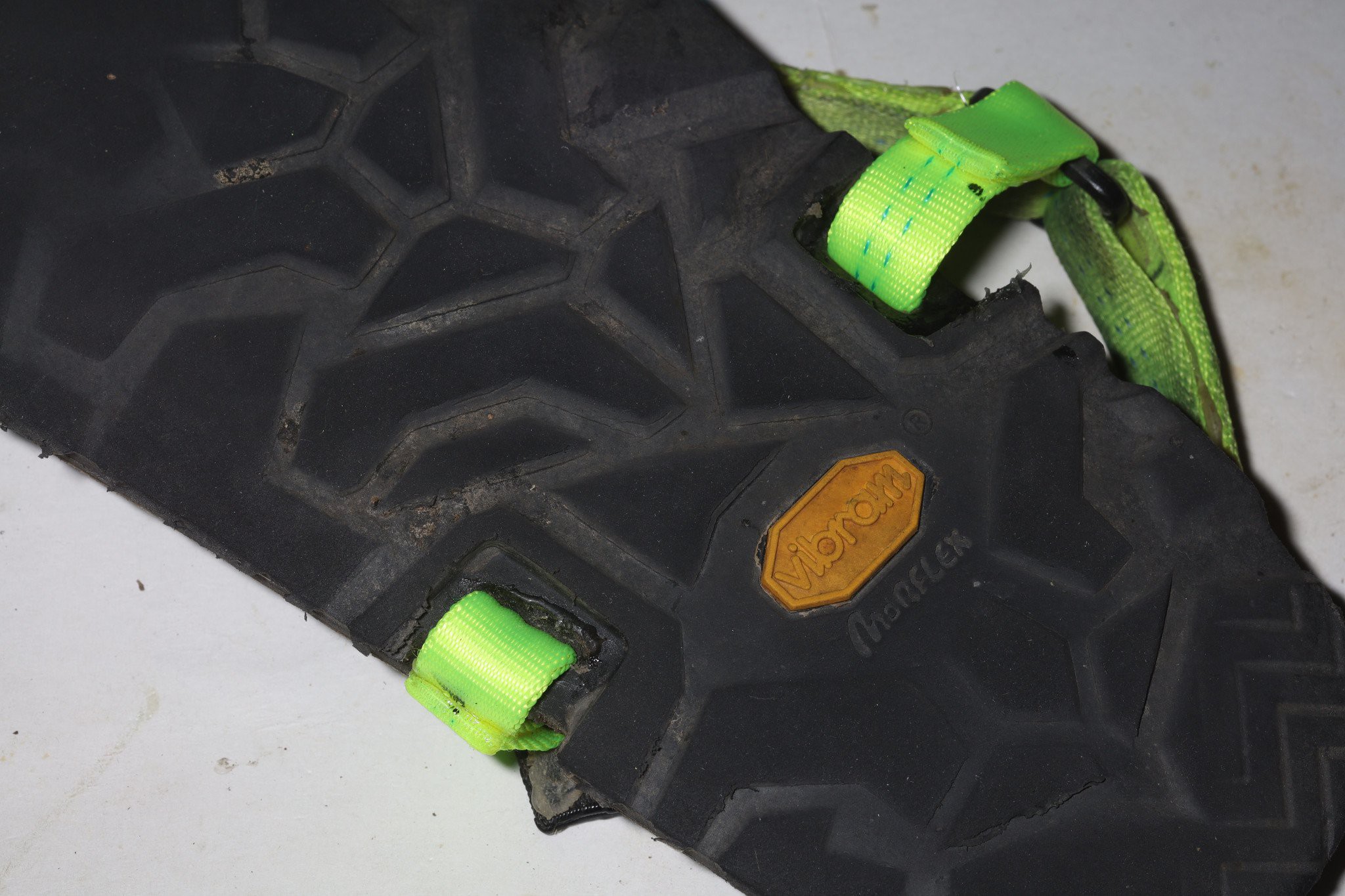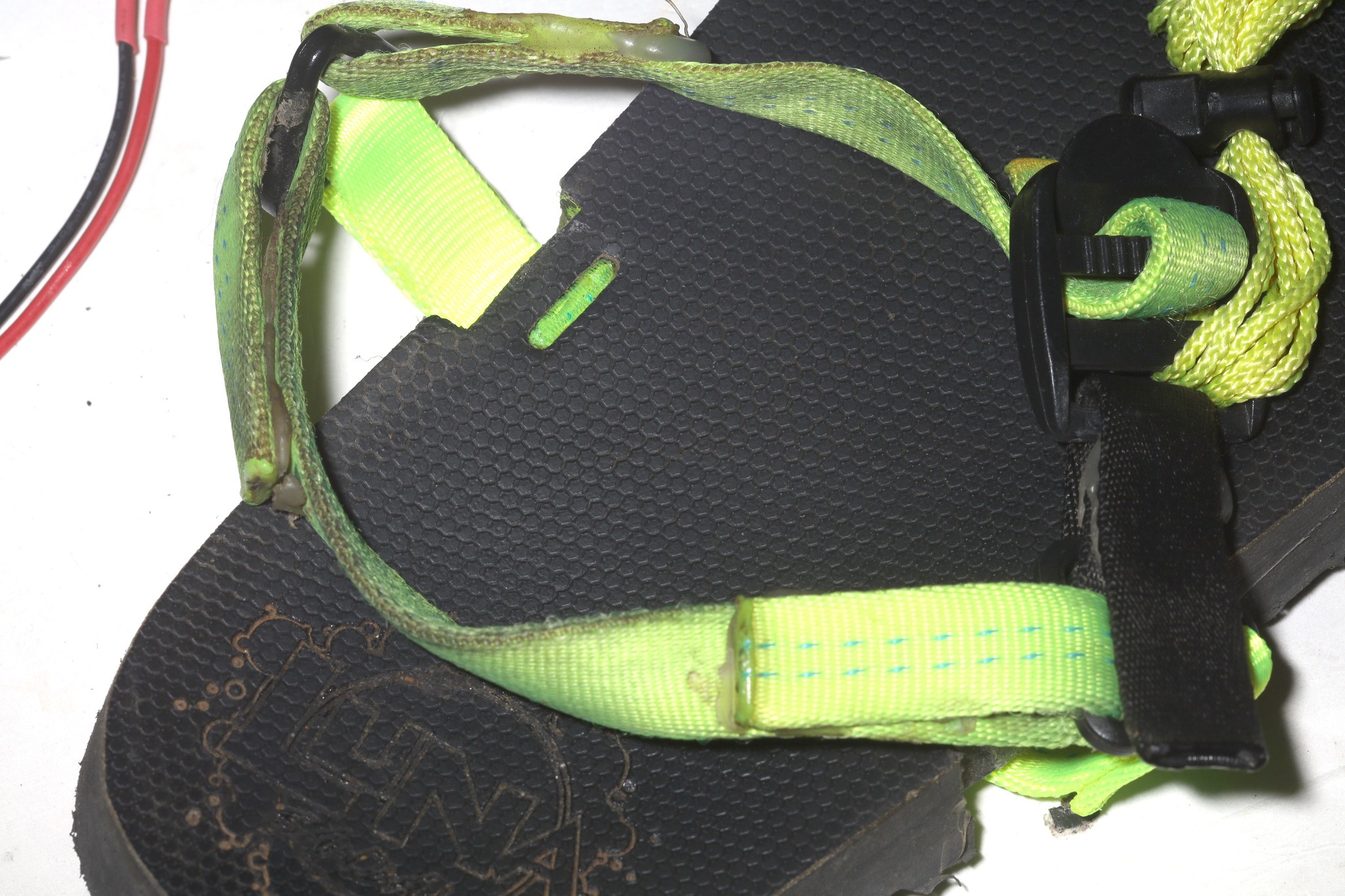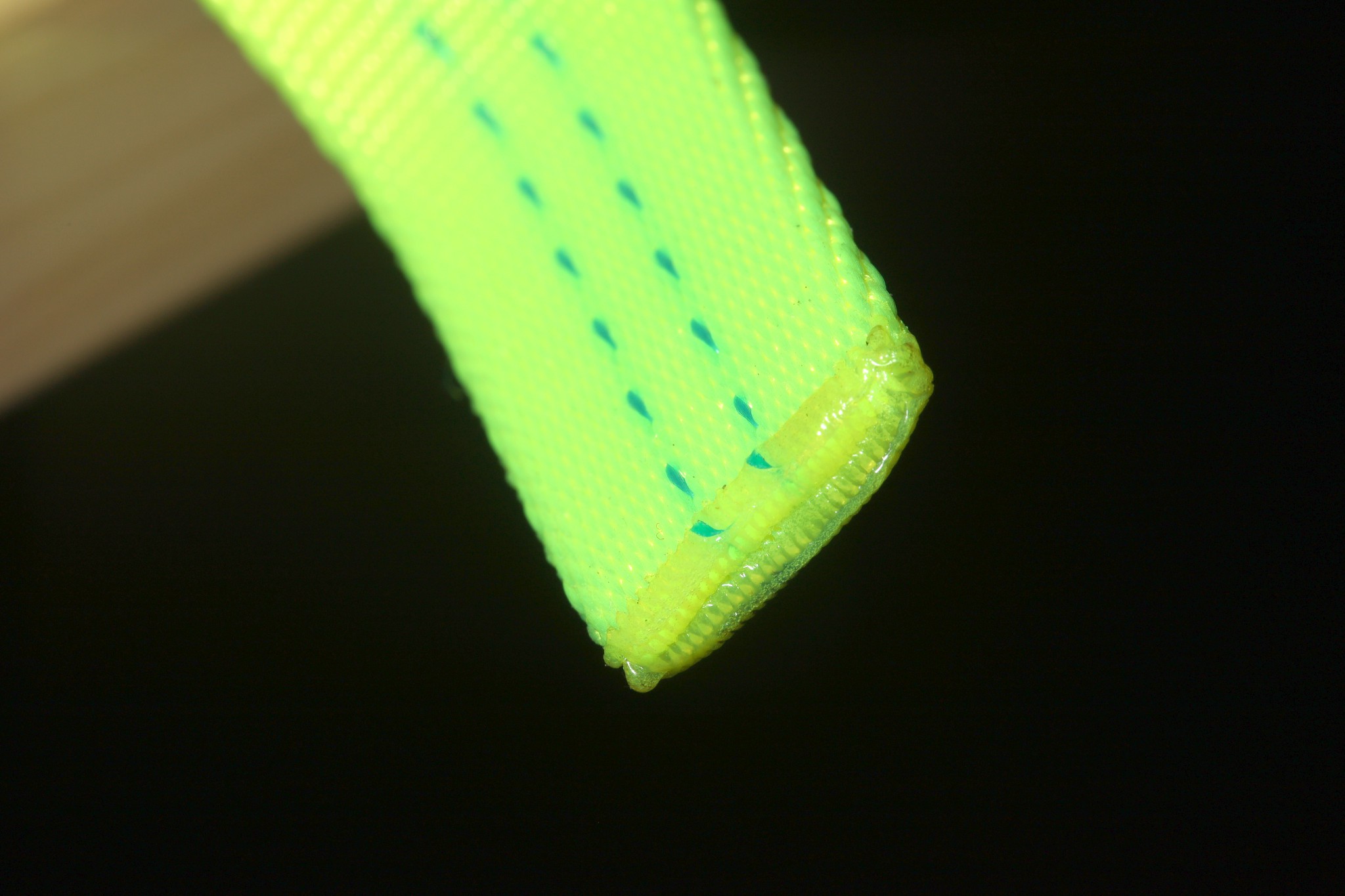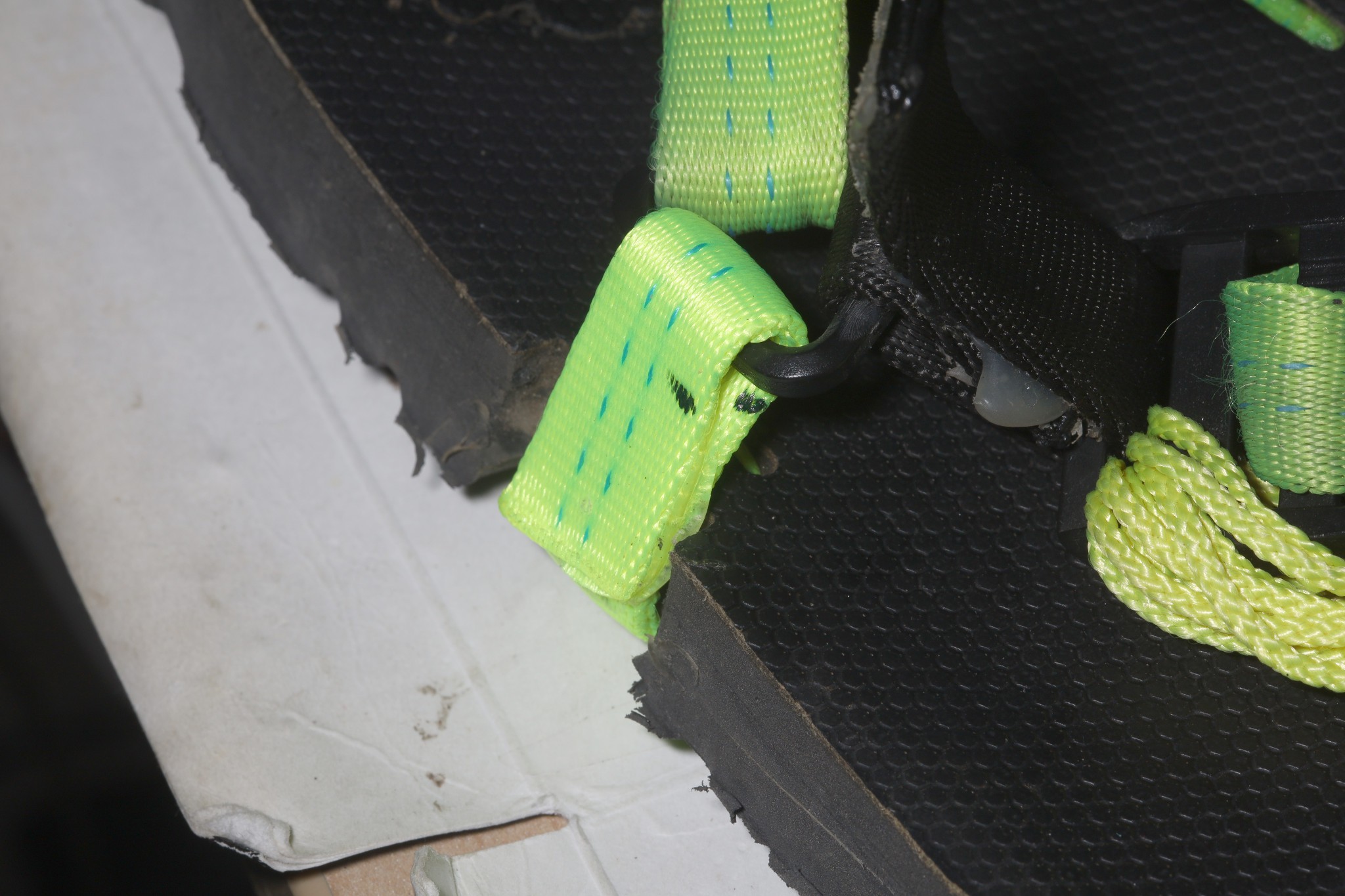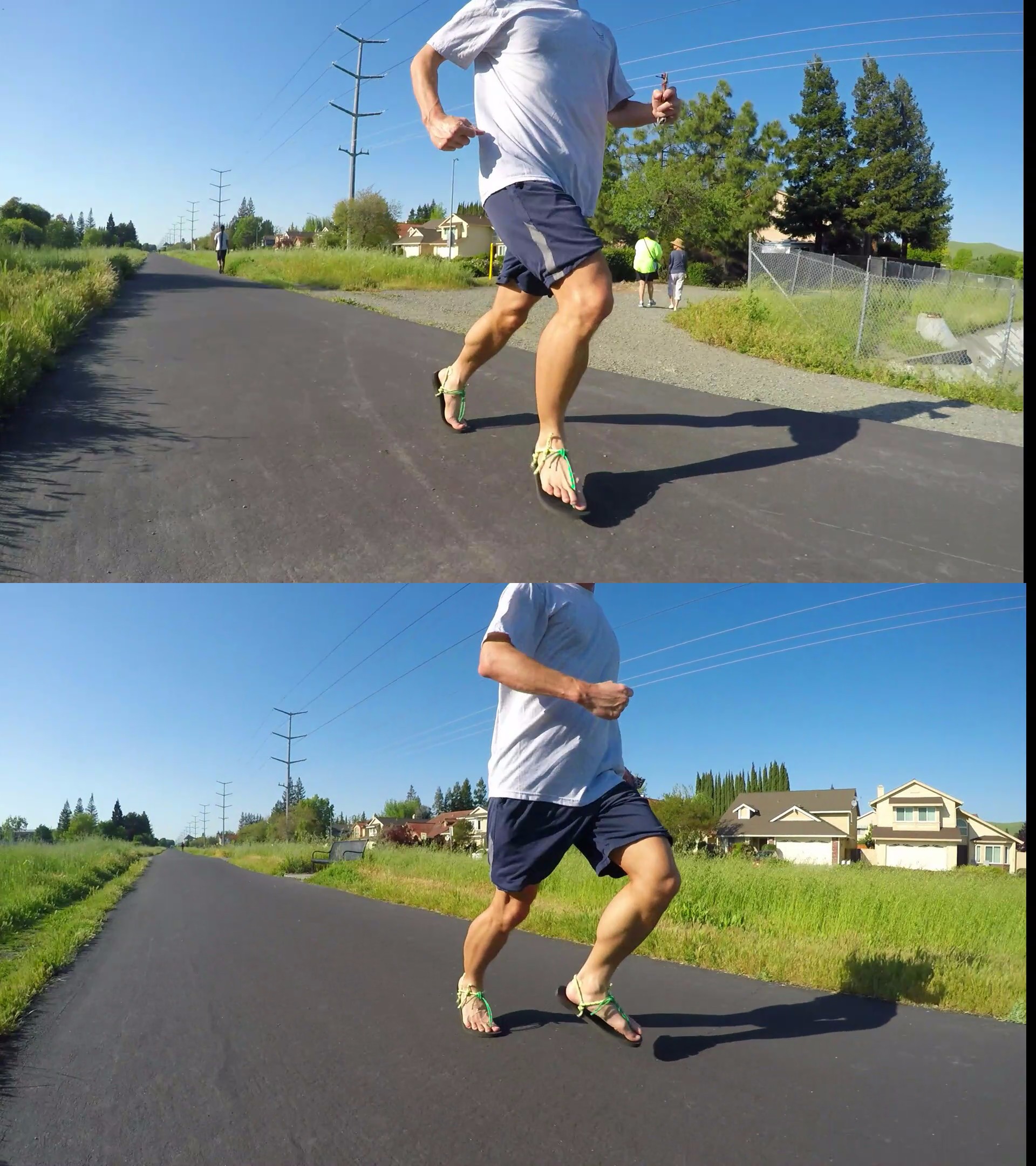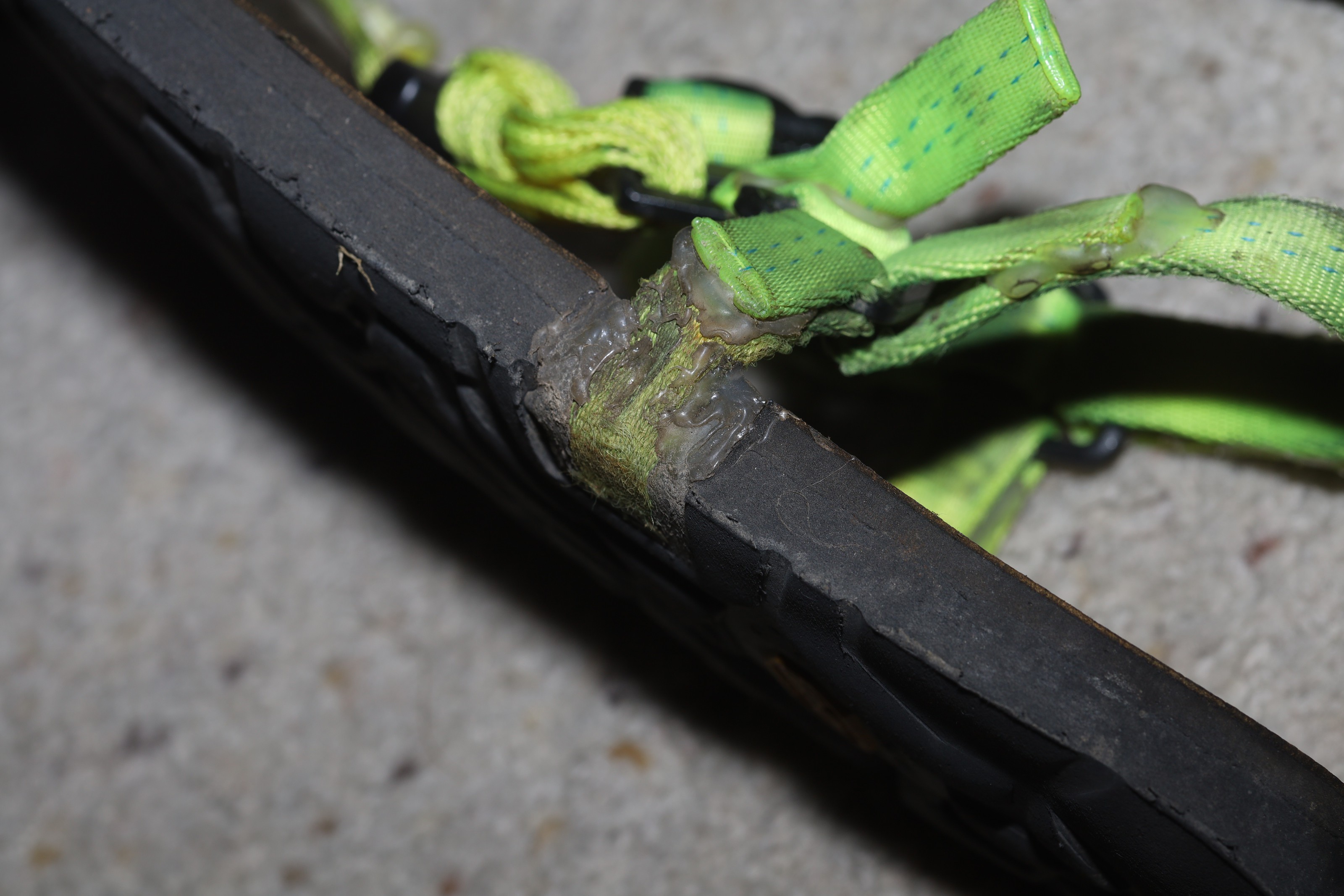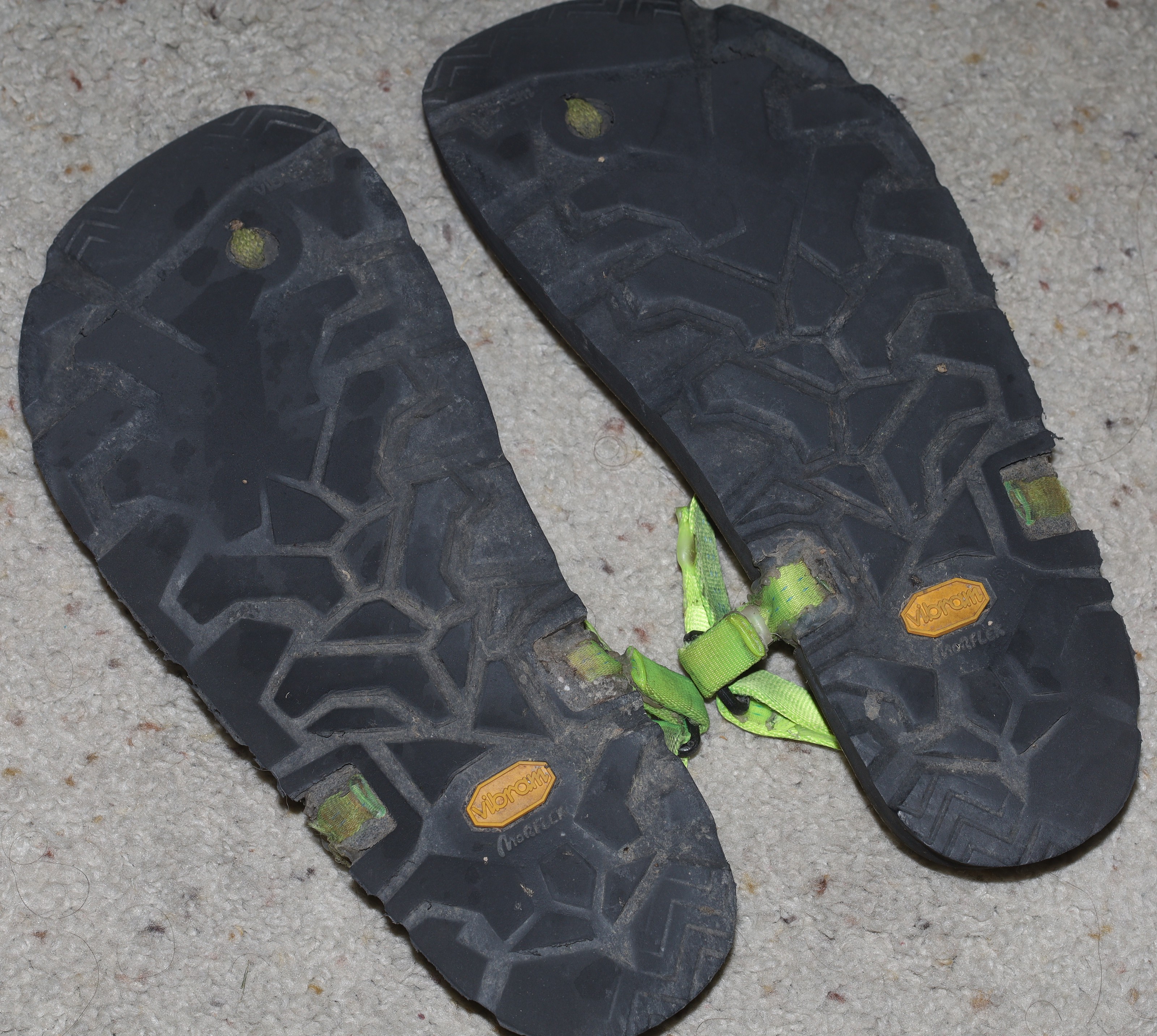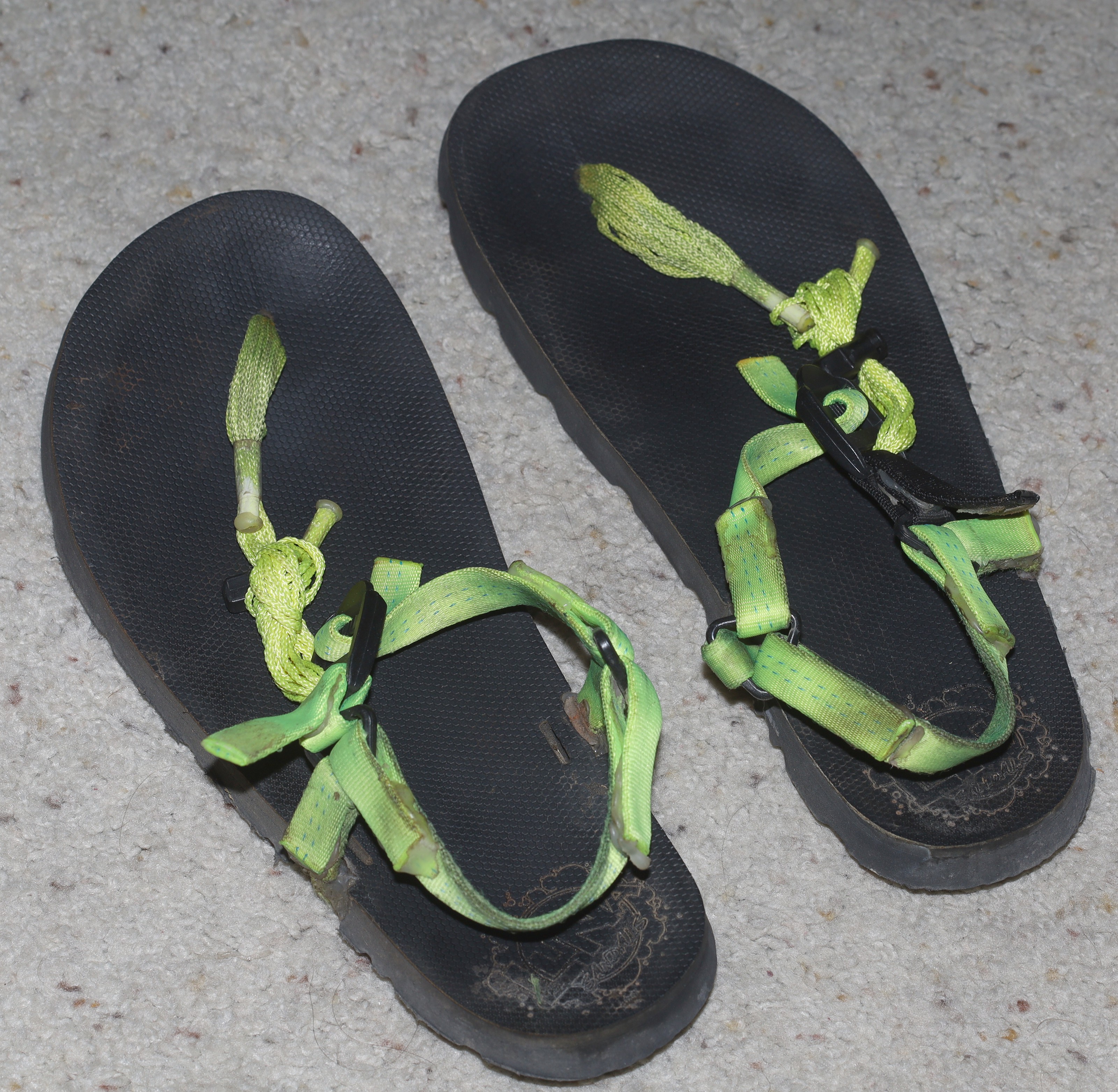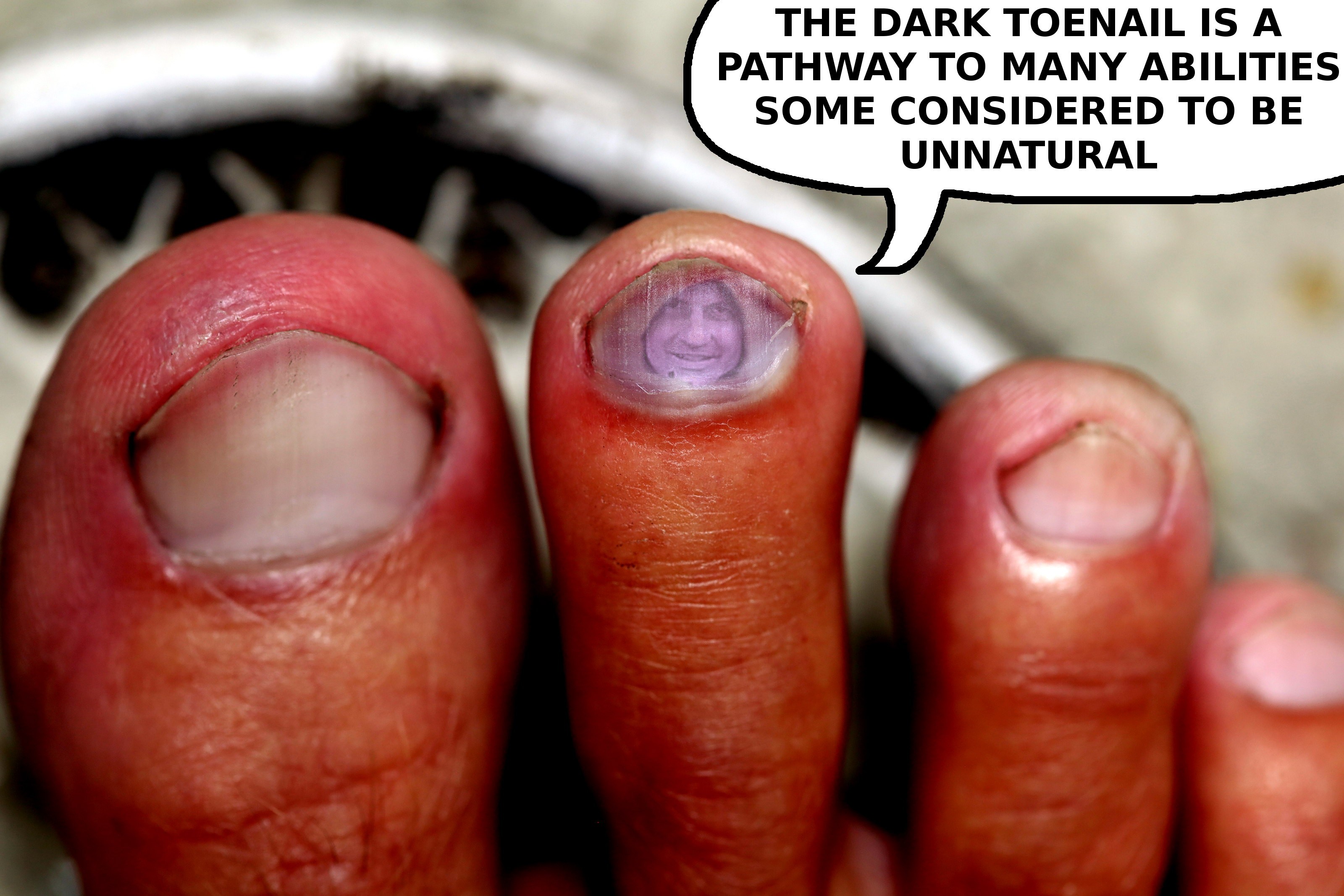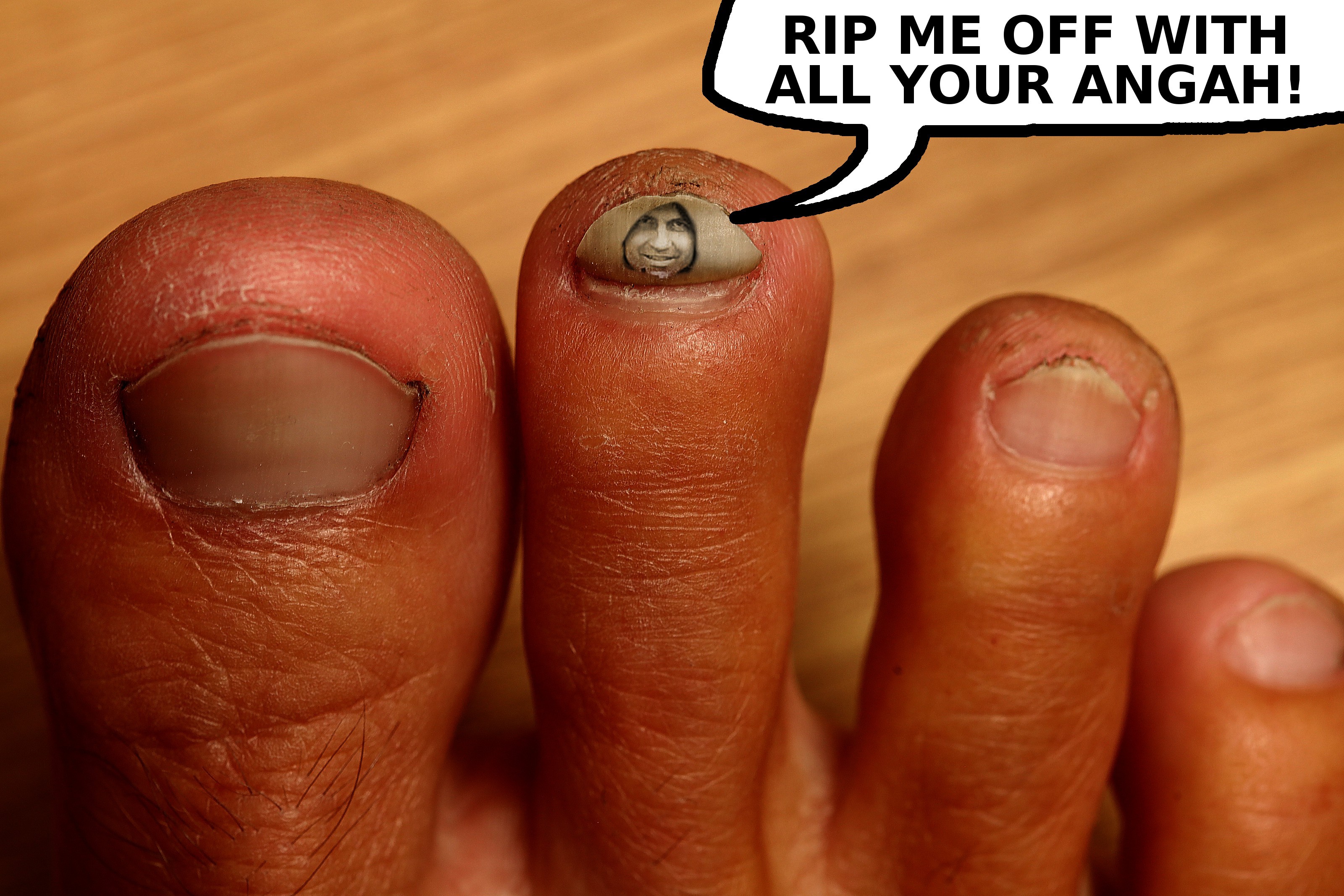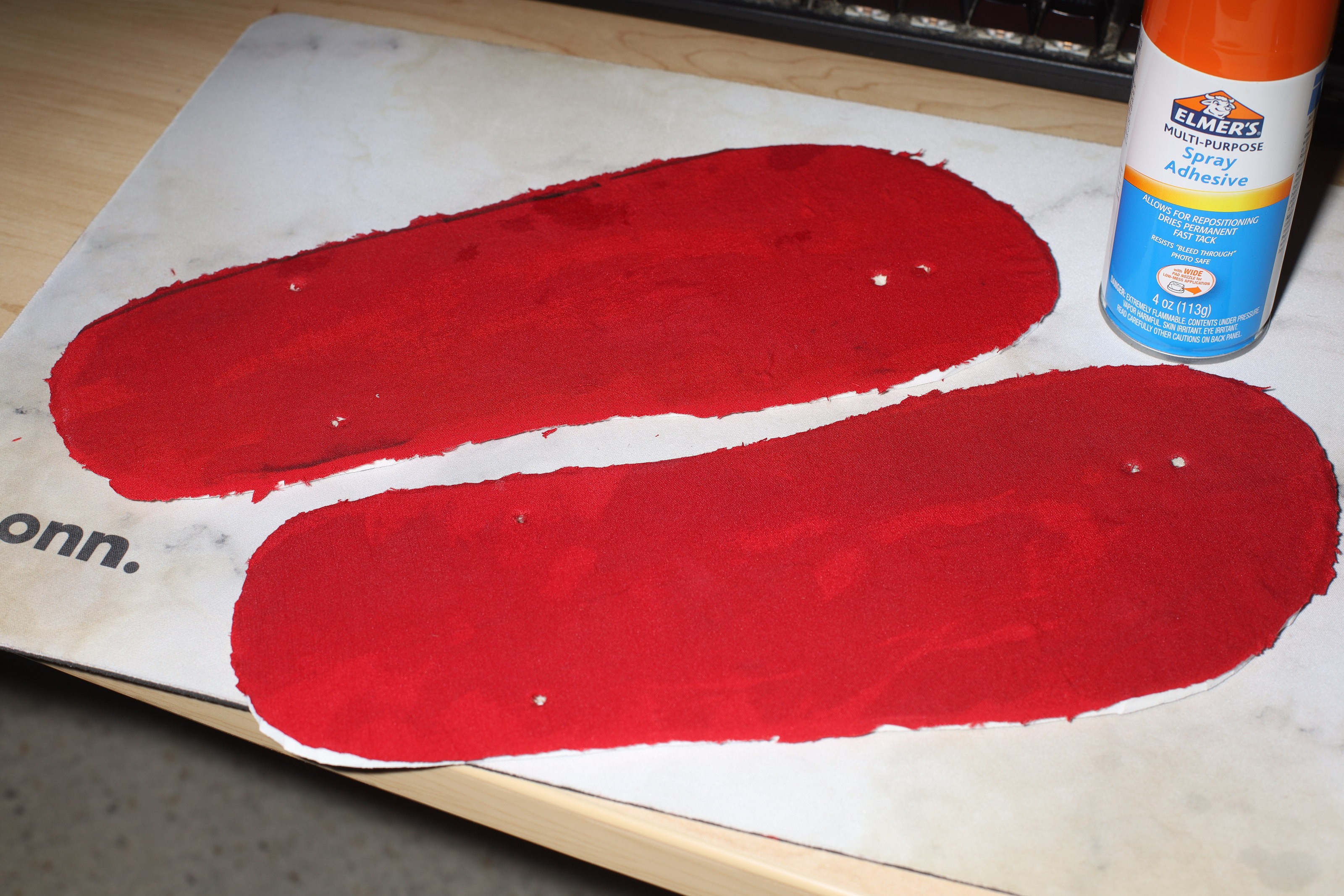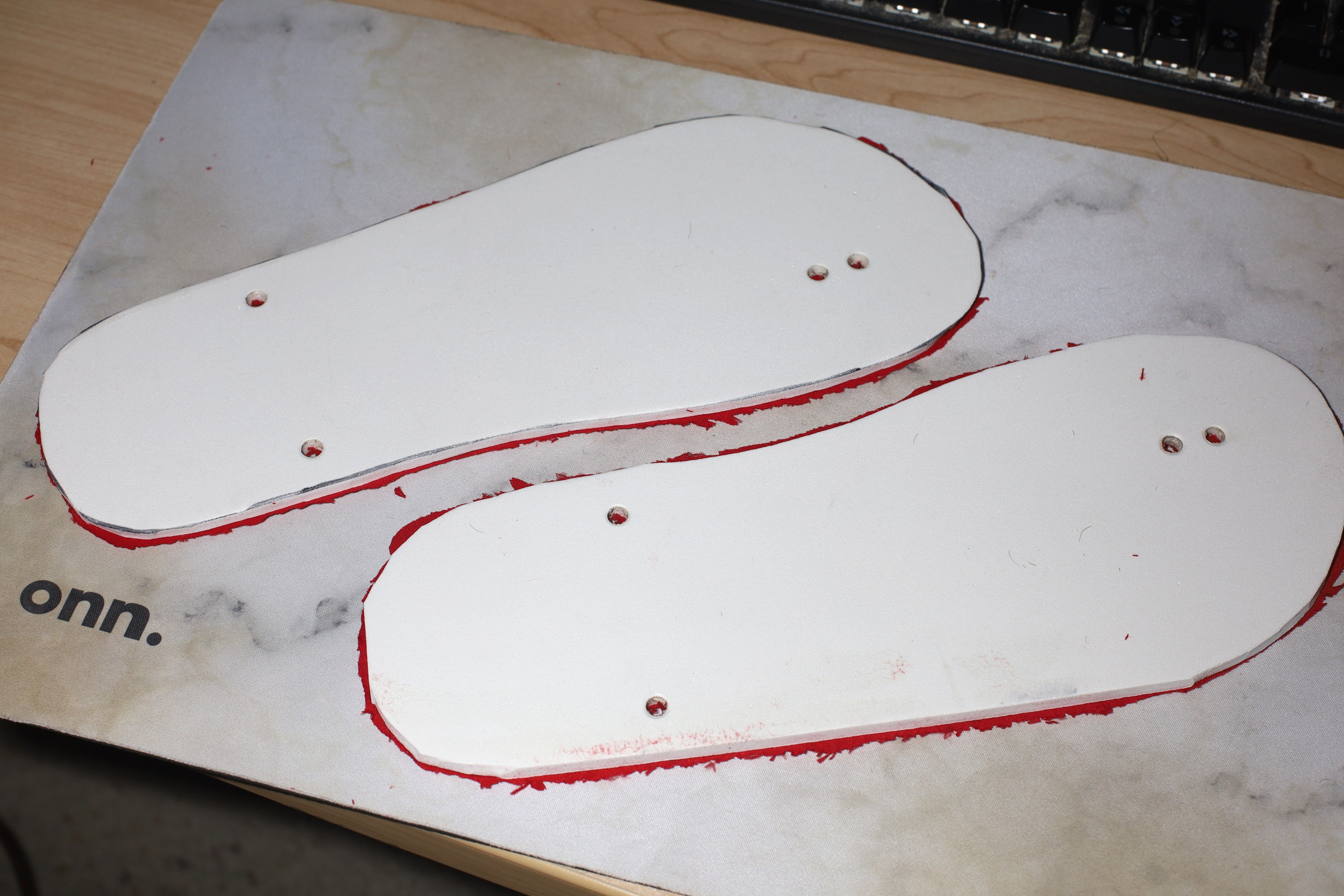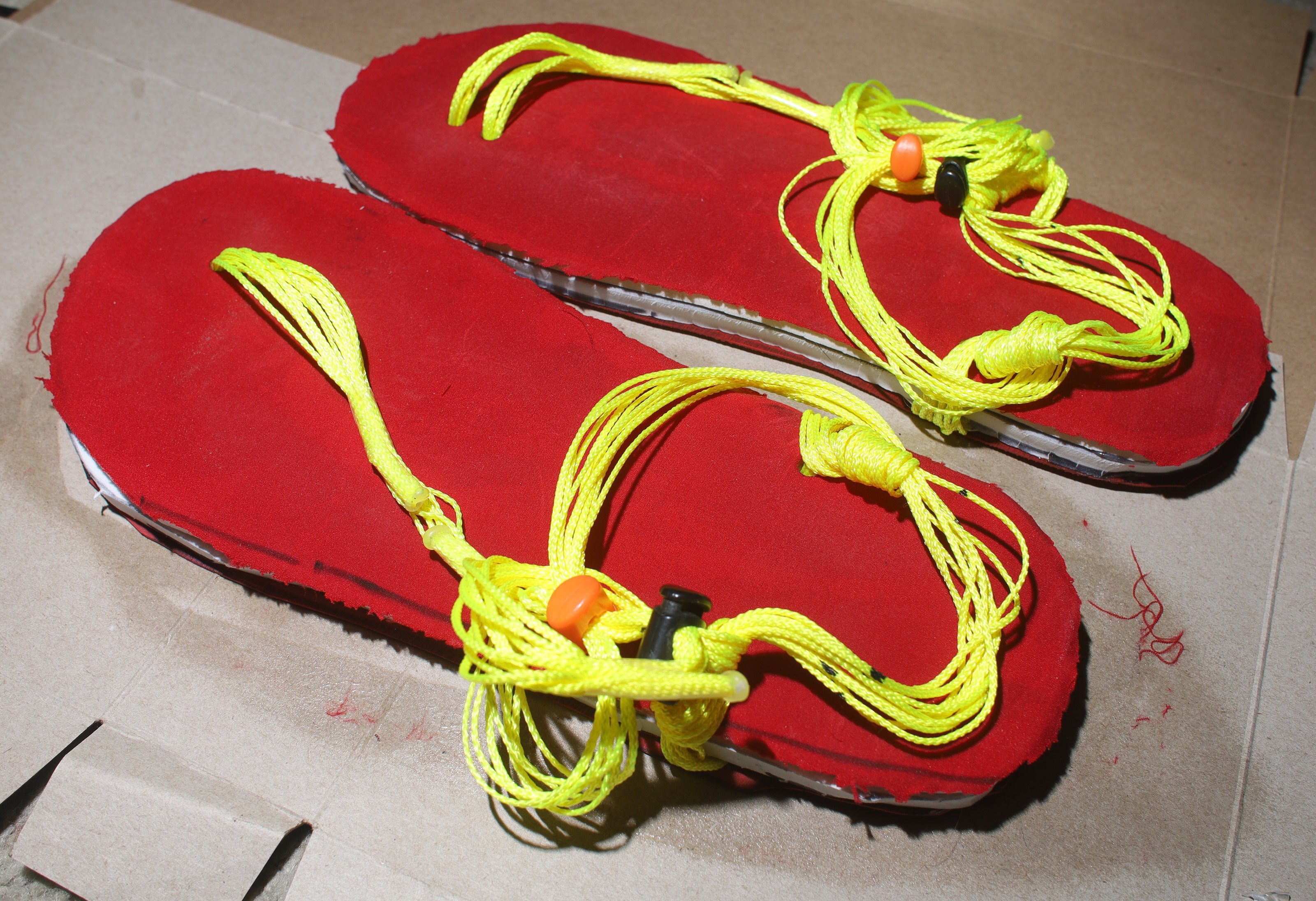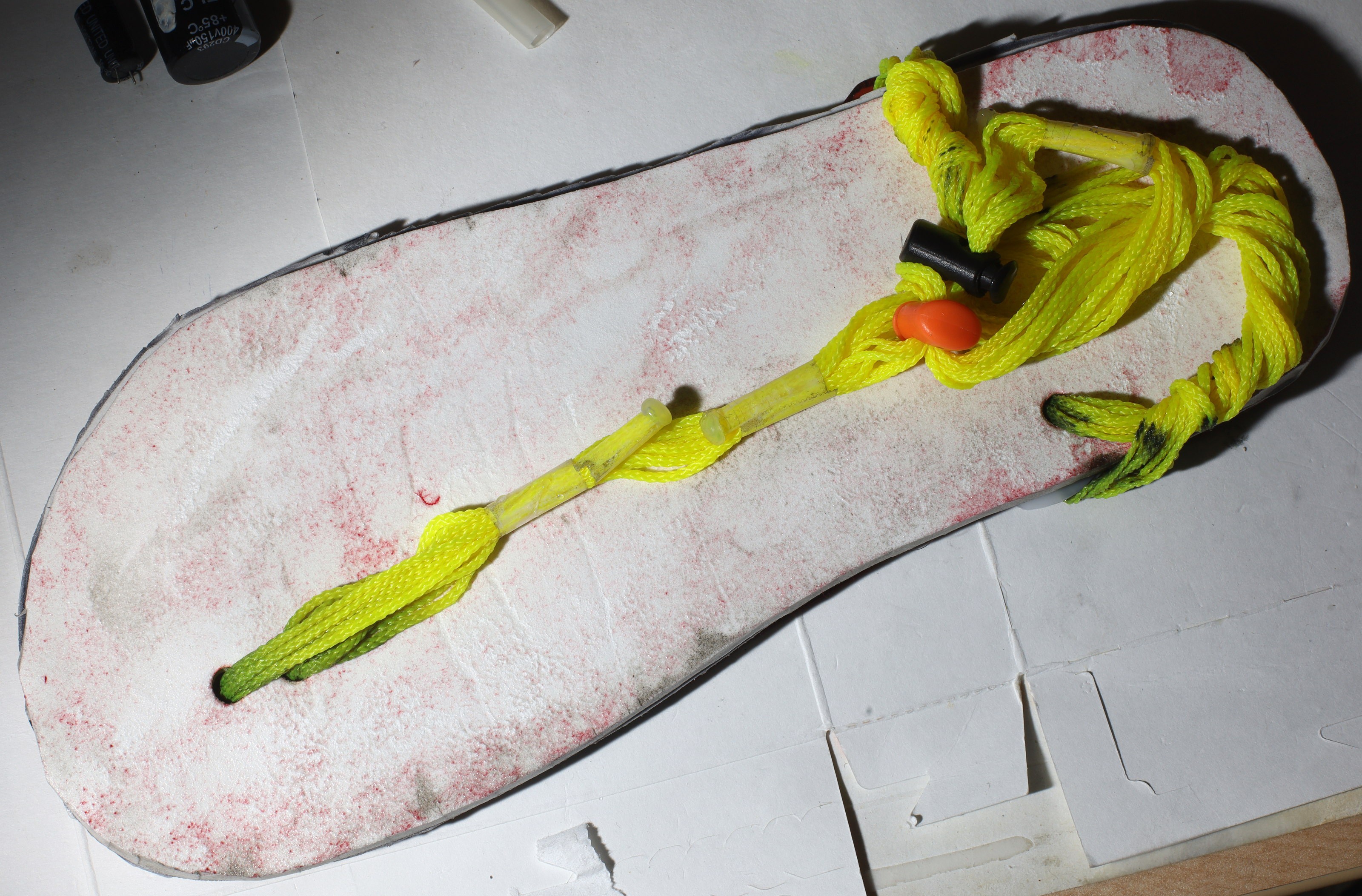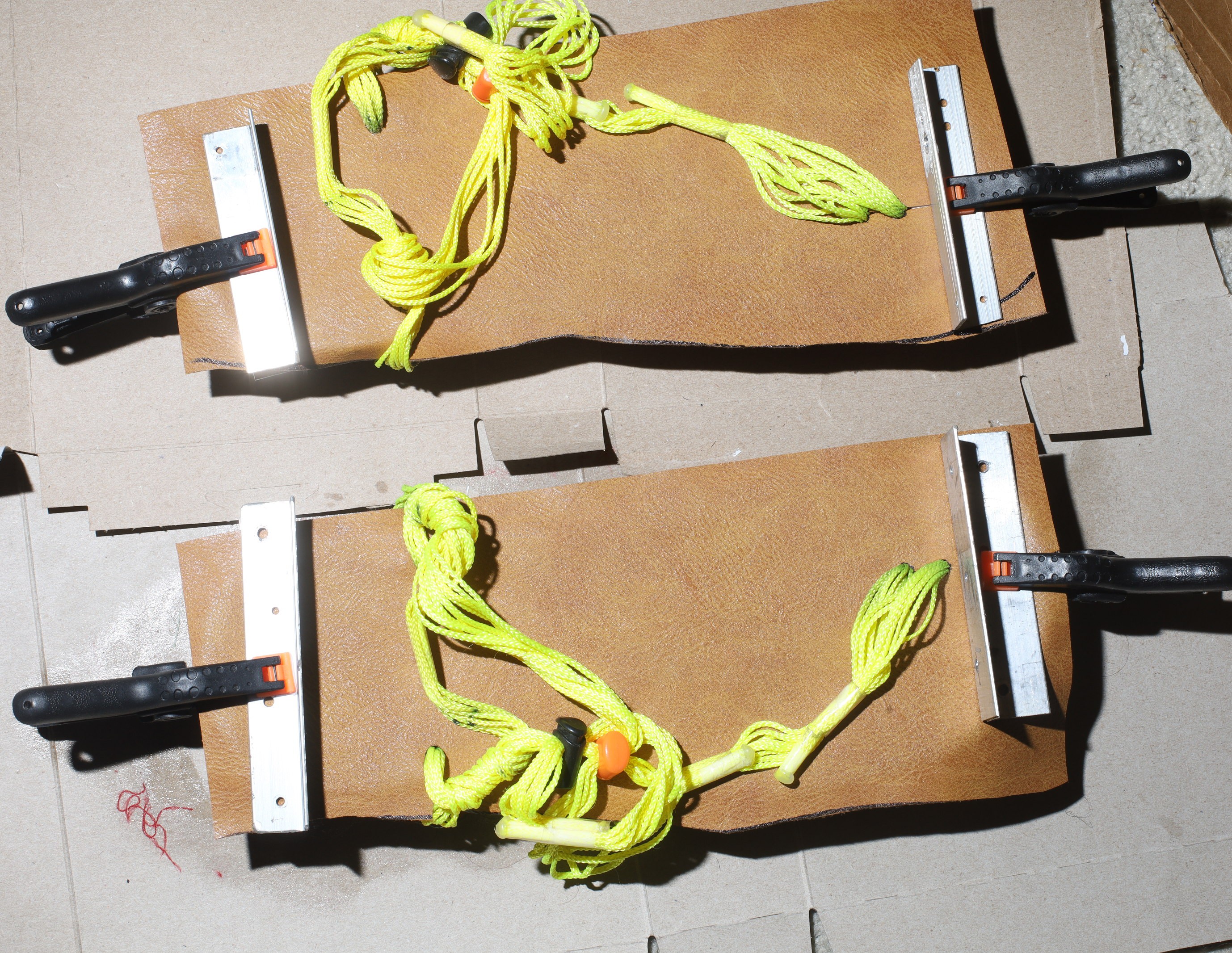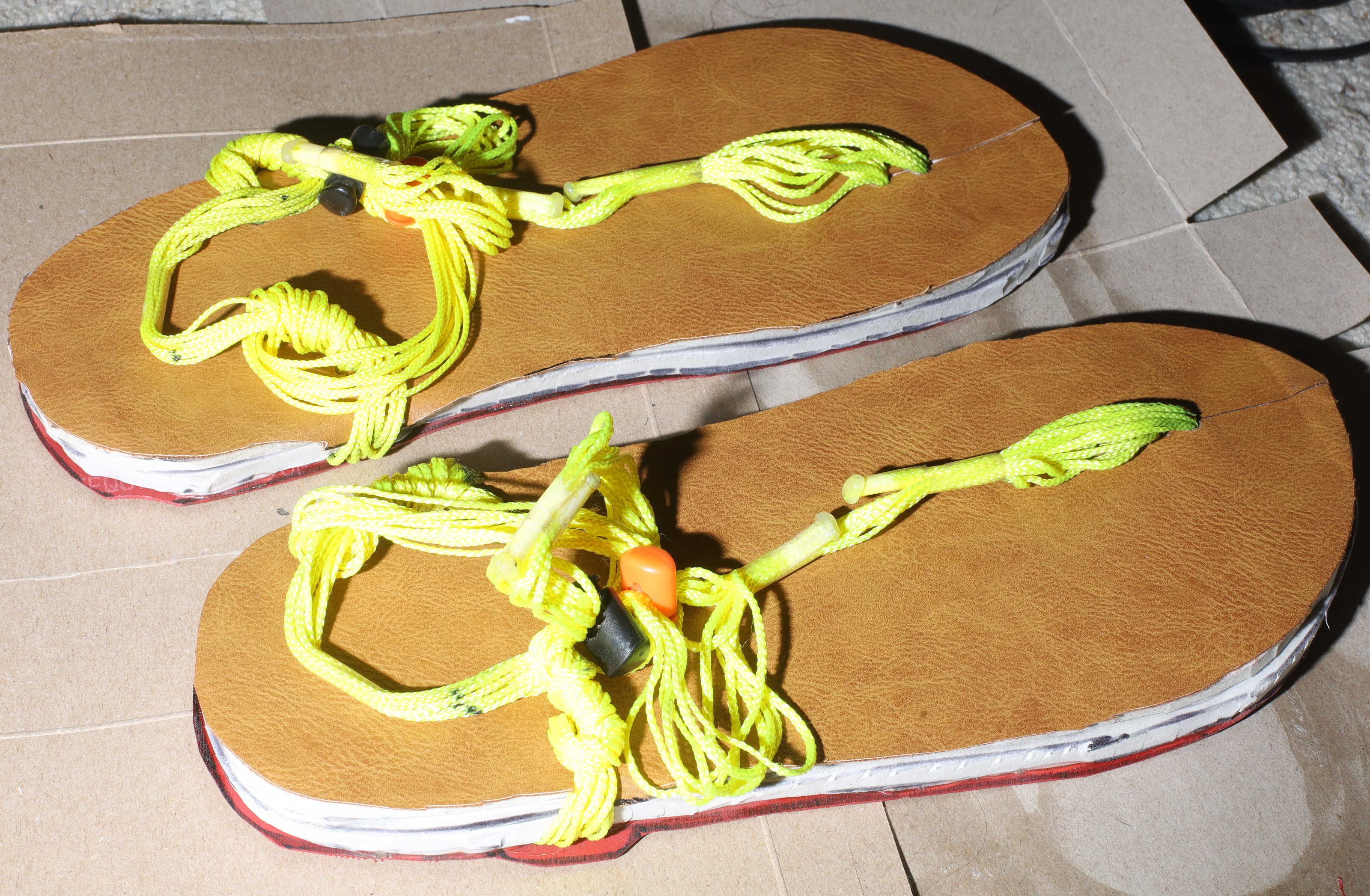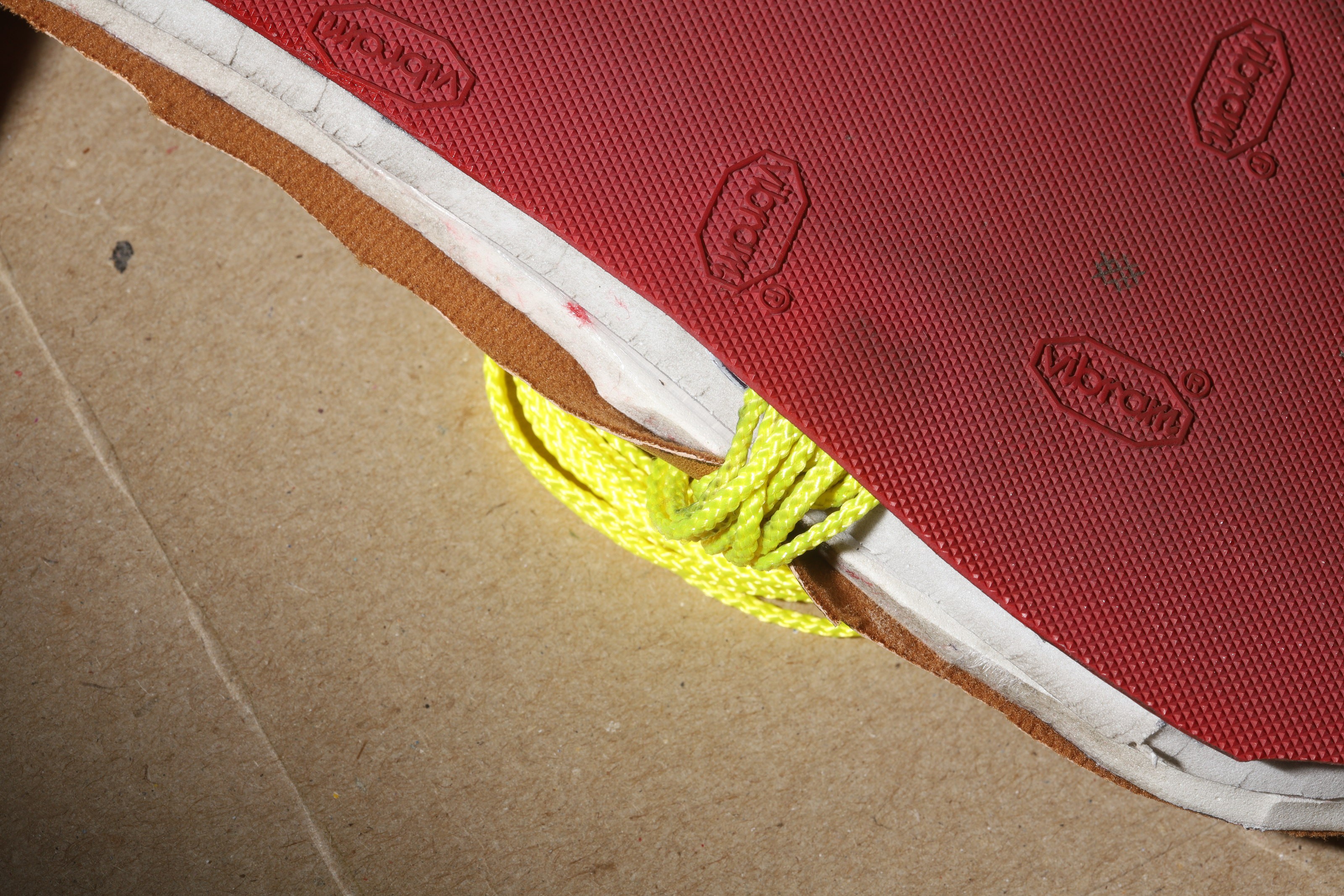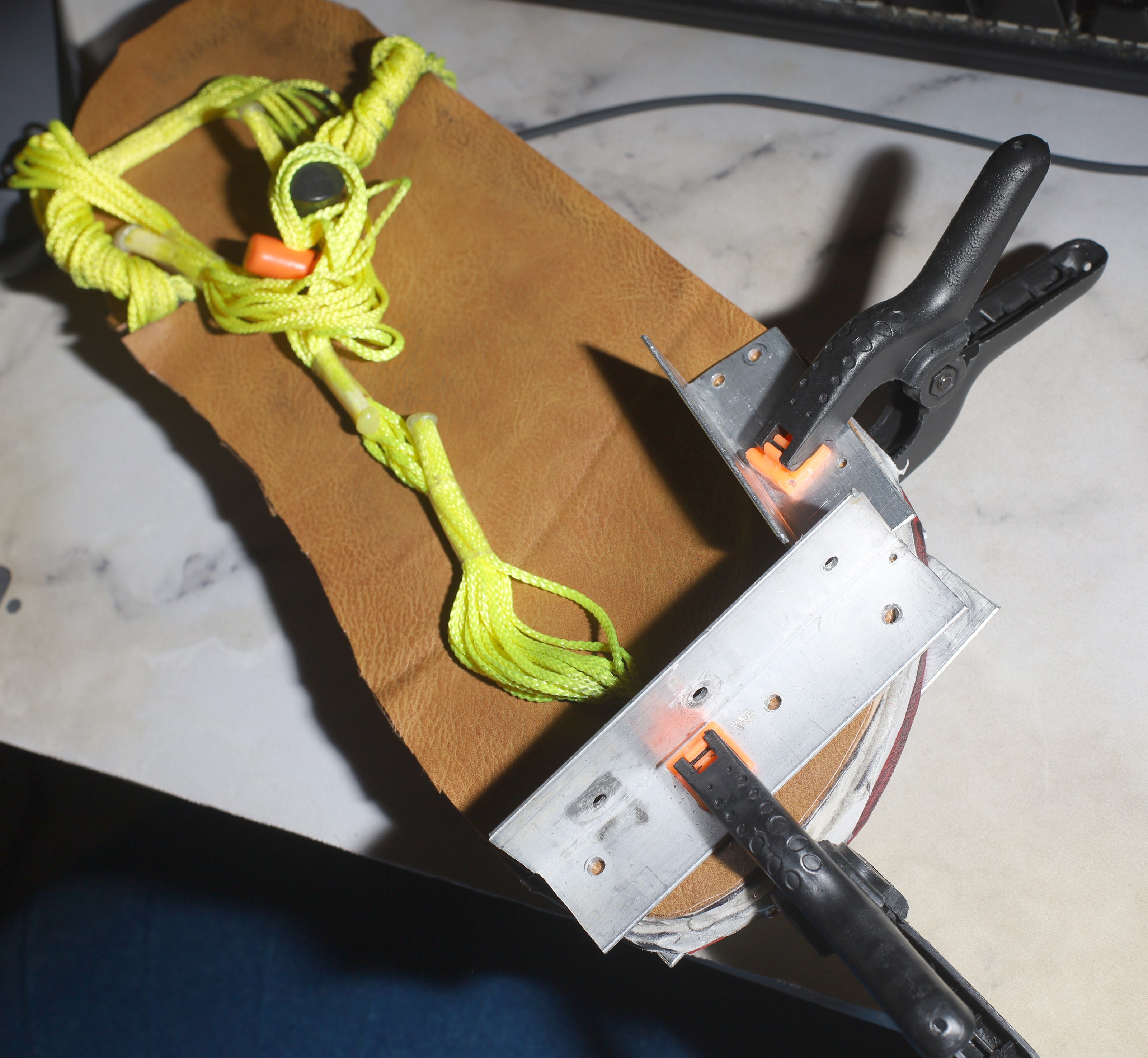-
DIY cord locks
01/29/2025 at 09:26 • 0 commentsAfter years of problems with commercial cord locks & much trial & error, the lion kingdom finally arrived at a promising design for custom ones.
![]()
![]()
![]()
The mane problems with commercial cord locks were lack of grip on new string, difficulty installing the string, limits on the size of the string. The trick with the custom ones is they're sized for exactly 1 string diameter, through painstaking trial & error. Experience with cord locks showed they could provide just enough grip to be useful while still allowing field adjustment.
Currently, they're sized for 10 passes of #18 mason line.
The big unknown is how they'll behave when the string ages & expands. Will the string still be adjustable. They could be made of TPU to emulate the compliance of a spring. They're removable after assembly & are pressed together by the same friction that grips the string. They've proven less prone to causing chafing, despite the sharp edges. There's finally the possibility of reusing string.
-
Suede sandals
11/19/2024 at 04:48 • 0 comments![]()
![]()
Fake Suede
![]()
Fake Leather
There's no more fake leather in the apartment. We only have a worn 1 year old sample.
-
Post tib tendinitis
09/27/2024 at 08:43 • 0 commentsIt's believed the sandals are providing more arch support as they wear down.
![]()
A bump tends to form between the heel & toes. It was originally believed the bump didn't provide any arch support, but it could be supporting the ends of the arch & that's affecting the longevity of the post tib. The front & rear are more compressed, so are supporting that part of the foot more. It's possible the layer of fake leather is reducing the support from the bump.
It might be necessary to keep sandals going longer & use only older ones for the highest effort. Some say arch support is bad because it weakens the post tib. No matter what, all cushioning of any kind is going to unload the post tib more as it ages. The only paw wear that doesn't is bare rubber.
![]()
The sandals showed wear shifting to the rear, after 4 months of switching to a heal strike.
-
Glass vs sandal
08/13/2024 at 22:59 • 0 comments![]()
![]()
Glass breached a sandal. It didn't hurt. It seemed to be in under the sole for a long time, slowly digging upward, scraping like 1 of many thorns. It caused a blister at 1 point & eventually poked through the leather. The only way to remove it was to cut open the sole.
-
Luna update 3
06/11/2024 at 18:47 • 0 comments![]()
![]()
Ended up hot snotting to keep the webbing in the holes. The friction holding it in seems to wear off over time. The trick is not to hot snot anywhere the paw is. E6000 has been hanging in there for webbing on webbing. Tried to make fillets to lessen the chance of it peeling off. It wouldn't be removable if it was on rubber.
![]()
Finally worn down enough to put in the patches.
-
Luna update 2
06/03/2024 at 04:34 • 0 comments![]()
After a rising injury rate forcing more walking in the lunas, the luna soles eventually wore down to the point of starting to shred the laces.
![]()
![]()
Hot snot on the inside was getting quite painful.
![]()
Decided to loop the laces through the holes. This would also need to be covered in a patch of rubber.
Patches would have to be hot snotted on the soles. They're too expensive to permanently glue.
![]()
![]()
If the laces were melted, they formed a nicely sized plug inside the holes. Without adhesive, they might hold up to normal use. It's just unknown how walking on the plug would feel.
![]()
E6000 for bonding laces wasn't promising. It only seems to permanently bond rubber. Hot snot on laces wasn't very good either but it was good enough. A sewing machine would be ideal, but past experience had the stitches causing chafing.
3 miles later, this was the most comfortable lacing system the luna soles ever had. It's really been dialed in over the last 4 years. If only the soles were still only 2 figures. Helas, the plugs are slipping out of the holes in normal use. They can go 3 miles before they have to be pushed back in. Some hot snot in addition to the hole plugs might be the next step. The only hard requirement for the strap holes is no glue or strap being on top.
-
Paw injury & death of the sandals
01/24/2024 at 22:19 • 0 comments6 years of worry free running ended with a maximum effort half marathon in the 12mm sandals. Things were going fine for 1 day after the race. 2 days after the race came a tearing feeling from the right flexor digitorum longus. The lion kingdom was done running. For the next 3 months, the injury came & went, but always returned after a certain amount of intensity, always delayed by 2 days. The great task was finding the cause. Reviewing the only detailed gait analysis in the sandals revealed how the big toe was always eccentrically flexed. Sandals don't have an upper to stabilize lateral & vertical motion so the toes flex to stabilize the sandals.
![]()
Only 1 closeup gait analysis video was made but it showed the big toes working hard at the same point in each step.
![]()
Replicating the same flexing without sandals was now excruciating. Massaging the area where the tendon bends seemed to get it to recover. It's not clear if replicating the flexing did any good.
1 possibility is the workload can be trained around, the same way running in shoes originally took training. Another idea is lubrication for preventing toe blisters was making the toes work harder. The other possibility is sandals don't work with human lion hybrids. Sandals like this have been worn by runners since human life began.
The fact that it took 6 years & it favored the more heavily lubricated right paw points to a lubrication problem. Wouldn't know what to do about the toe blisters though.
-
Luna update
11/10/2023 at 01:10 • 0 comments![]()
![]()
![]()
The Luna sandals which arrived in 2020
https://hackaday.io/project/88623/log/177225-luna-sandal-details
went on to work quite well for walking but not running. They have the grip required to climb hills. The hot snotted fabric strap never had any problems as long as the hot snot was manetained & the laces were loosened before putting them on. There were dreams of printing a more robust attachment or looping fabric through the existing holes. There was a dream of sewing fabric on fabric instead of gluing.
The suede coverings needed washing after every outing. They eventually shrank & didn't stick on so they were left off. The bare rubber was acceptable for walking.
The original link was lost to time, but lions believe they were the mono
https://lunasandals.com/collections/luna-collection/products/mono-winged-edition-mountain-crystal
What was $80 in 2020 is now $110 so these will be the last lunas in the lion kingdom. It's not clear what lions will use for walking when they wear out. It might go back to shoes since walking was never subject to causing blisters. $110 was once the domane of top tier Hokas. The $140 Hokas are now $200 but inflation in a lion's mind doesn't equate to something getting less attainable, just the money being less valuable.
The replacement might be unpadded rubber since the only thing preventing the EVA sandals from being used for walking is compression.
-
Pleather failure
06/25/2023 at 02:10 • 0 comments![]()
![]()
Many toenails were turning to the dark side when sitting directly on 16mm EVA soles. Lubricant had a very negligible impact. The mane suspects were the foam compressing & riding up the front of the toes & the stickiness of the foam. The 12mm EVA soles were much easier on the toes.
The big needs in an upper material were grip in rain & blister reduction. Bare EVA was falling short in these departments.
![]()
![]()
The next step towards a better top material was spray adhering scrap fabric. This was a total mess. TSA gloves are definitely required. The fabric didn't all look the same color, but it all adhered. The lion kingdom's scissors are horrible at cutting fabric.
![]()
Completed pair. A better method is to glue an oversize piece & cut it later. The gluing jig could use more improvement, maybe cutting bits of angle aluminum to precisely fit. The big question was how the fabric would handle wear & water.
![]()
Early testing had debonding around the edges in heat. As for reducing blisters, fuggedaboudit. Fabric might even worsen blisters. It might be more tenacious than EVA & more like socks because it absorbs water like socks. Paws felt a bit raw after a hot 7 miles on fabric.
They might have reduced dry skin. They might still do better in rain, but that's a few months away. With the blister problem, fabric is still a total waste except for rain.
![]()
Elmers adhered where it wanted to & proved impossible to release without damaging the foam. Hot water helped.
Suede might still be the ideal upper material, but the original 1/16" suede https://www.hobbylobby.com/Crafts-Hobbies/Leather-Craft-Supplies-Tools/Leather-Pieces/Assorted-Suede-Remnants/p/80917344 is now unobtanium.
There are heavy suedes for a price. This piece is a 1/8" brick.
https://www.michaels.com/product/suede-leather-trim-by-artminds-10297420
The next material was fake leather.
![]()
Fake leather was Elmered on. It required some clamping. Suspect more permanent adhesion is going to require full clamping.
![]()
The big question was if the fuzzy side would adhere.
![]()
Cutting oversized pieces after adhesion didn't go any better than cutting them before adhesion. The scissors can't navigate around the laces.
![]()
Some sections didn't adhere. It was hoped enough would adhere to do some testing. Fake leather had a new carpet smell lions haven't smelled in 30 years.
After 8 miles on fake leather, it held on just enough but started to come off. There was no obvious benefit over EVA. It might have better grip in rain & might be less blister inducing because it dilutes the foam compression. It didn't noticeably make the sandals heavier.
The best solution might be a patch of hard material under the toes which doesn't compress. Making the entire upper out of hard TPU might work, but would be expensive.
The original reason for suede was to have a less grippy upper than rubber. Hard TPU might be too abrasive. There could be a hard TPU layer on top of EVA to even out the compression. Fake leather could go on top of the TPU to provide grip in rain.![]()
![]()
![]()
Pleather was not removable without taking off foam. A piece of cardboard went in under the toes with less tenacious school glue. Cardboard is not much stiffer than foam & it has problems in water. It actually yielded a noticeable improvement. Harder materials in that thickness get expensive fast. The long term solution is PLA impregnated with holes for adhesion. Carbon fiber would be the most expensive.
The thought has occurred of replacing the entire front chunk of 6mm EVA with a 6mm PLA section, but it would be expensive.
------------------------------------------
A few hundred miles with cardboard showed it's probably a waste. The cardboard eventually delaminates as it gets wet, no matter what the adhesive is. Adding more adhesive to repair it makes it heavier. The leather itself might be hardened by adhesive alone.
Pleather ended up becoming very abrasive after 10 miles in heat & when it accumulated dirt. Blisters soon followed. Vaseline might be required, just like bare EVA.
 lion mclionhead
lion mclionhead